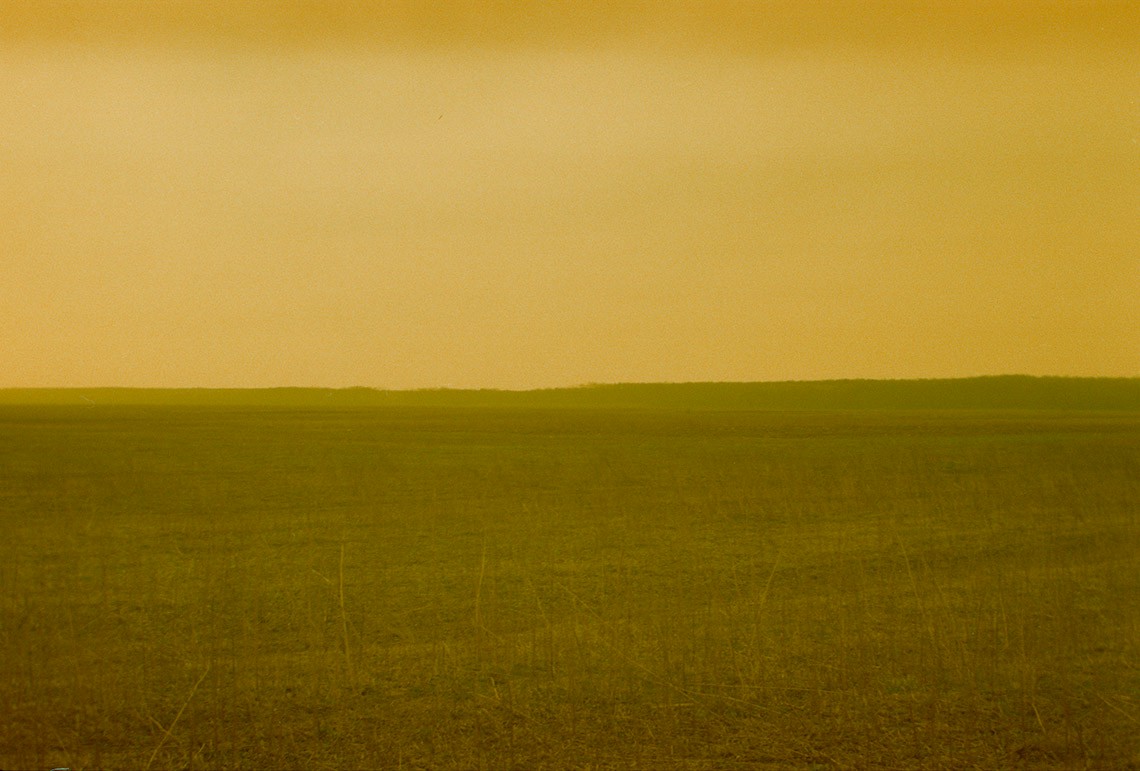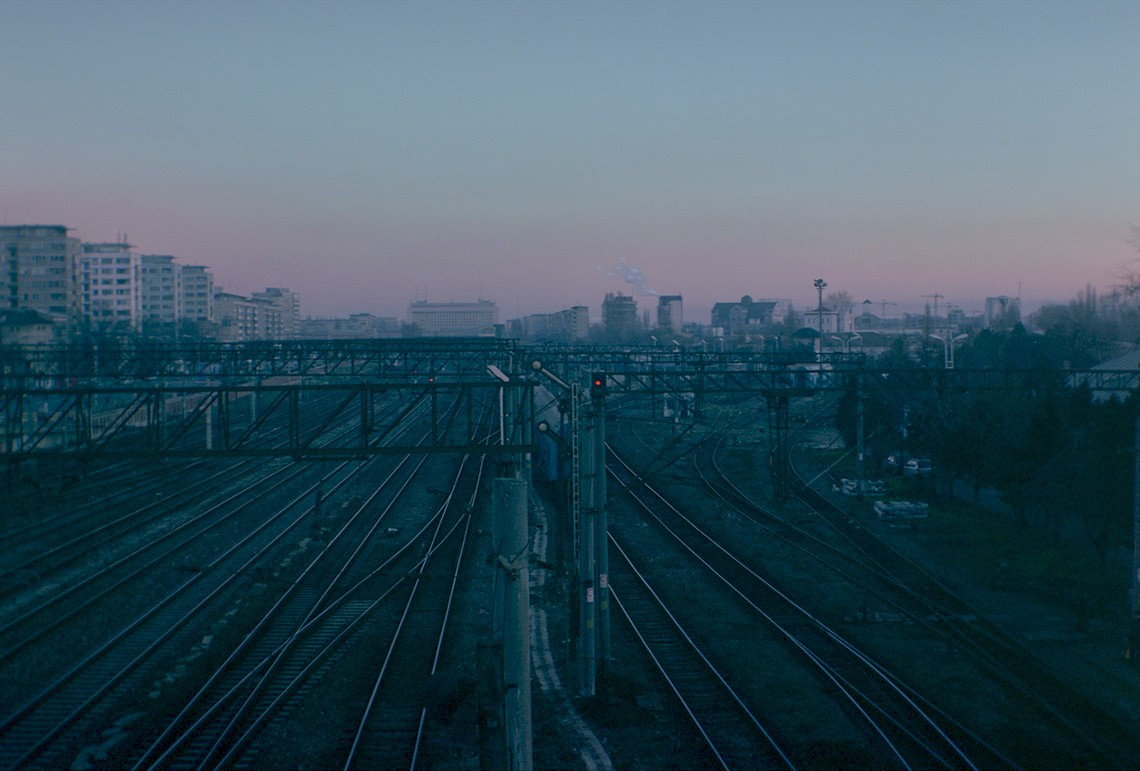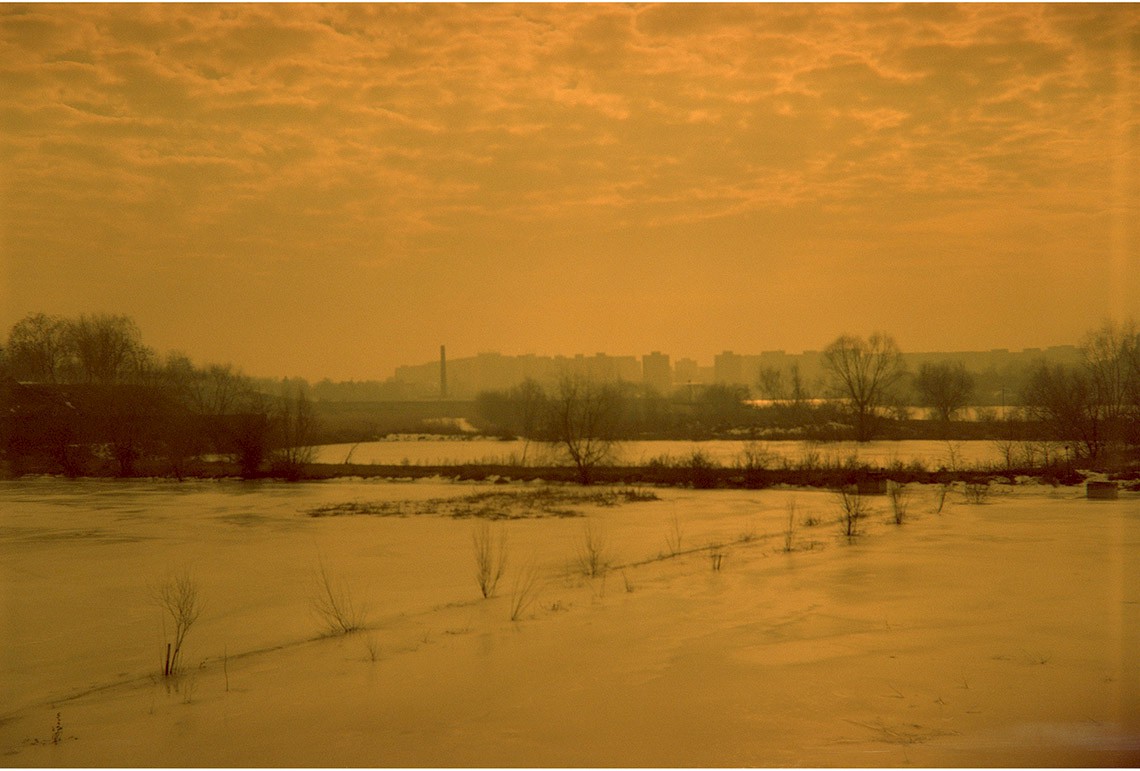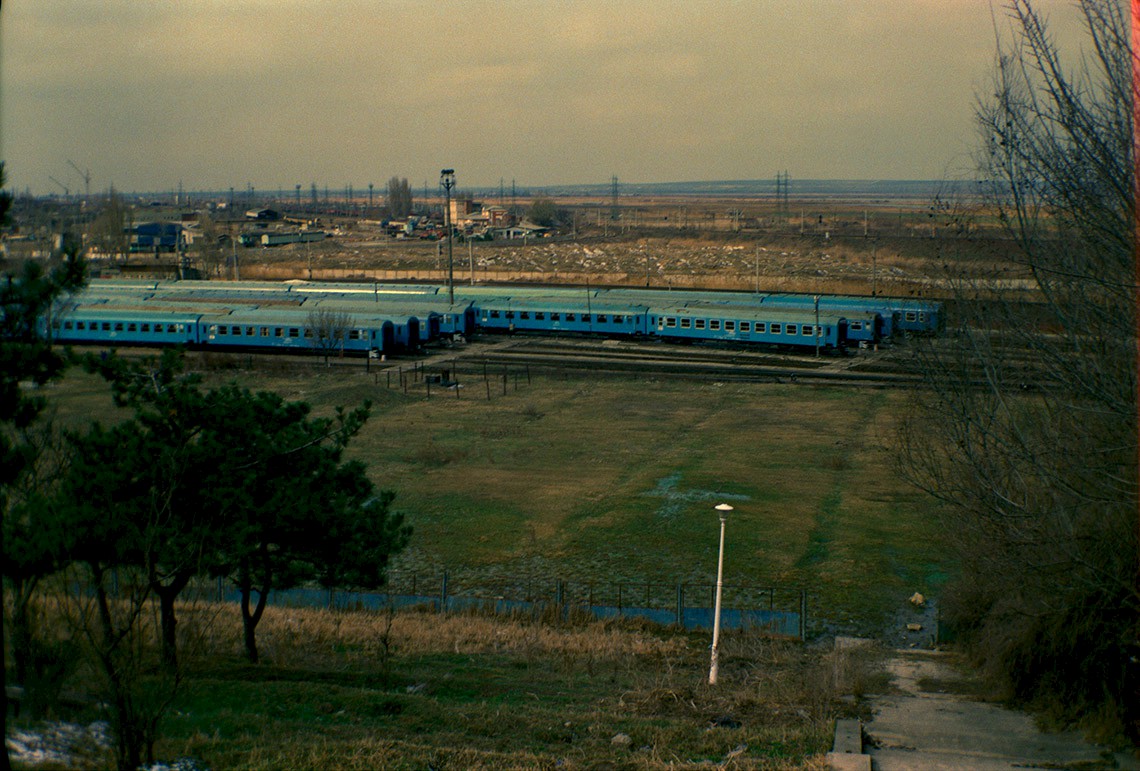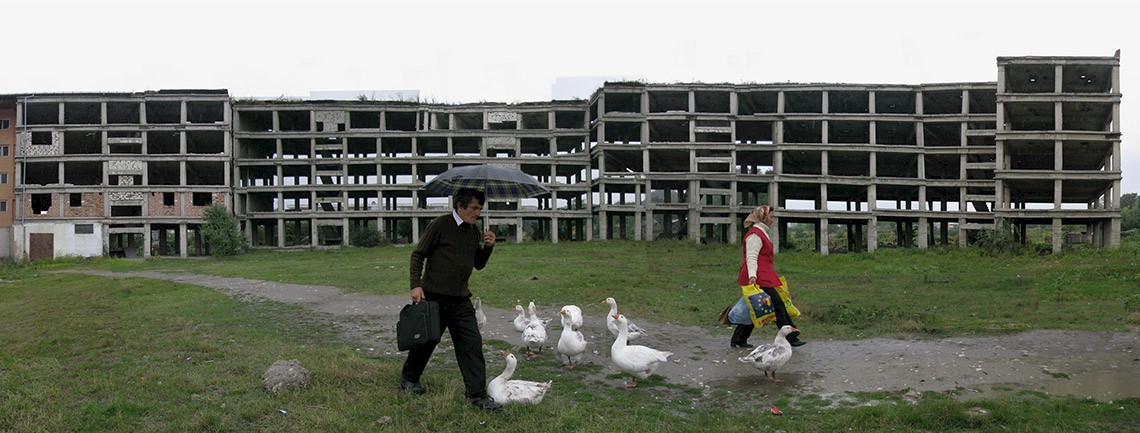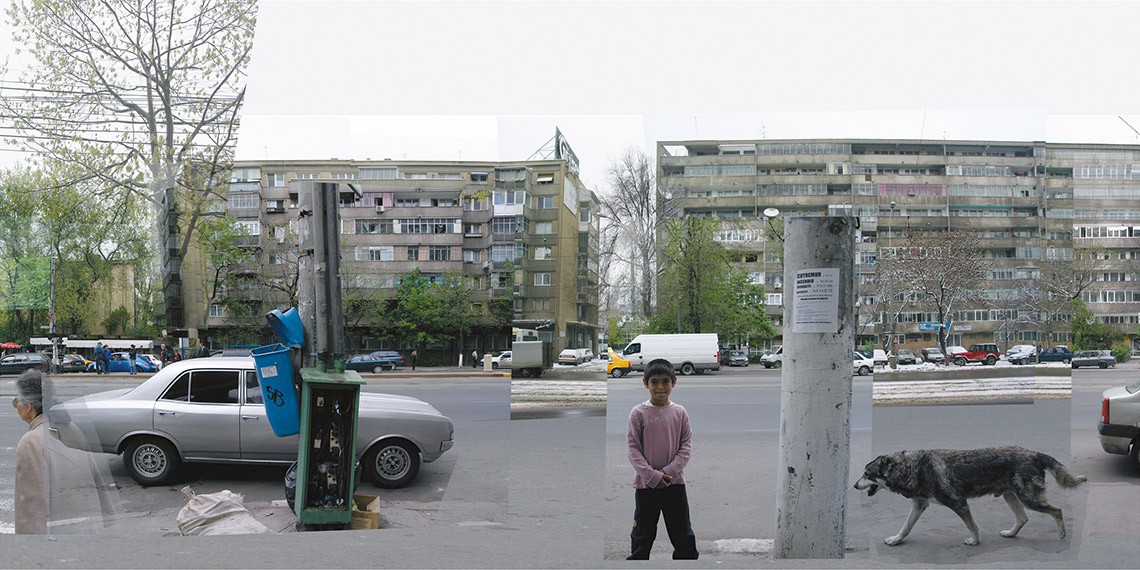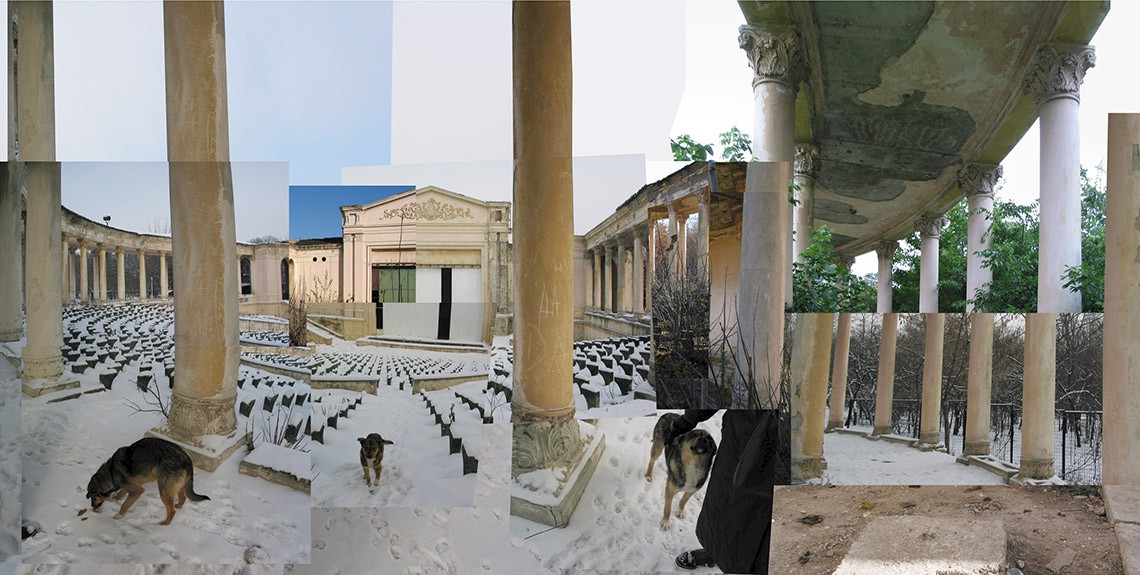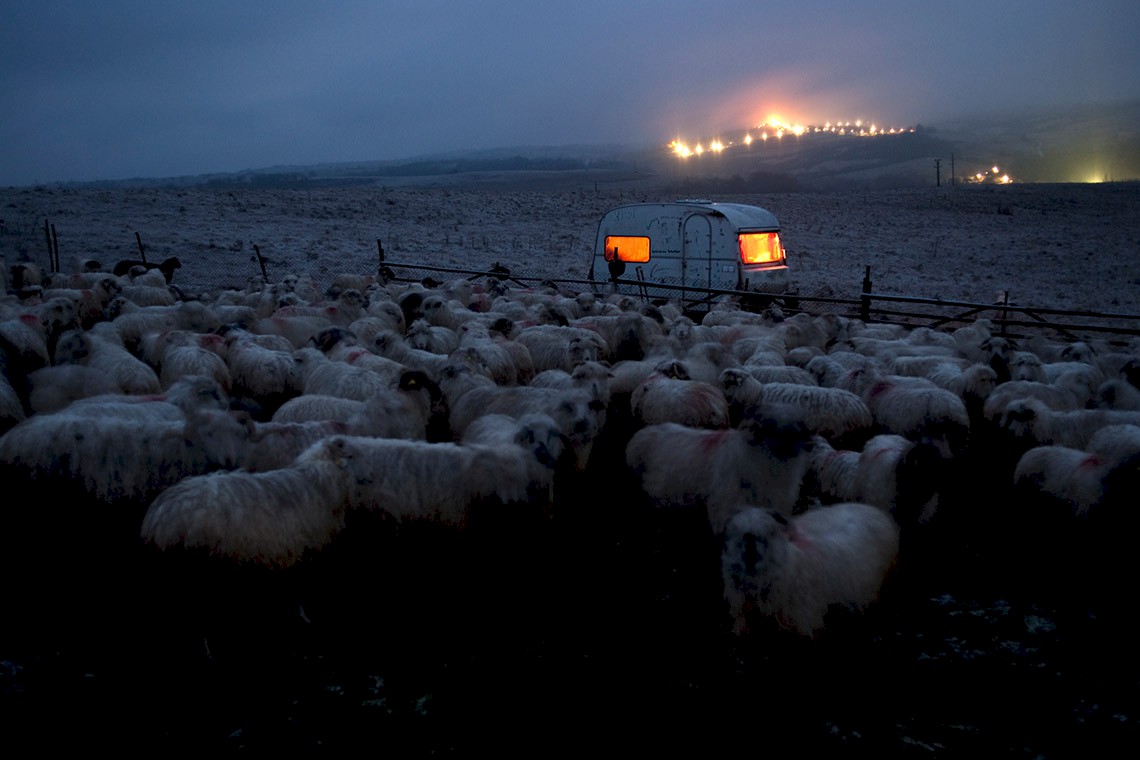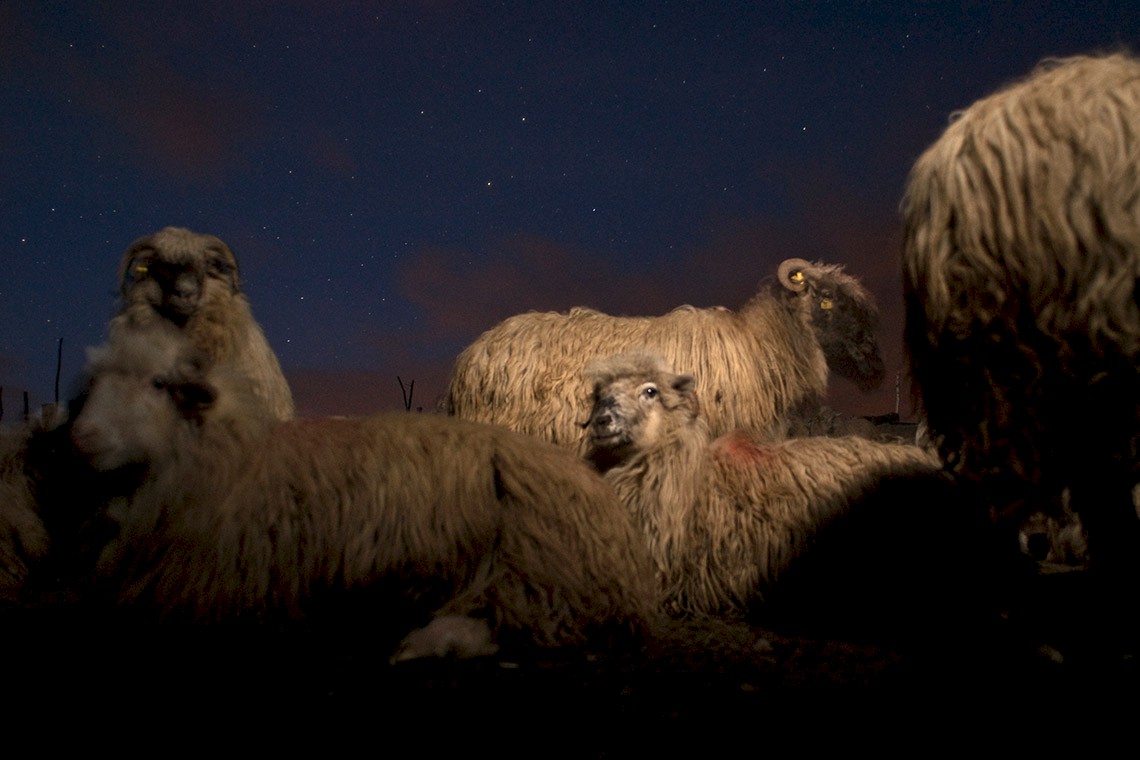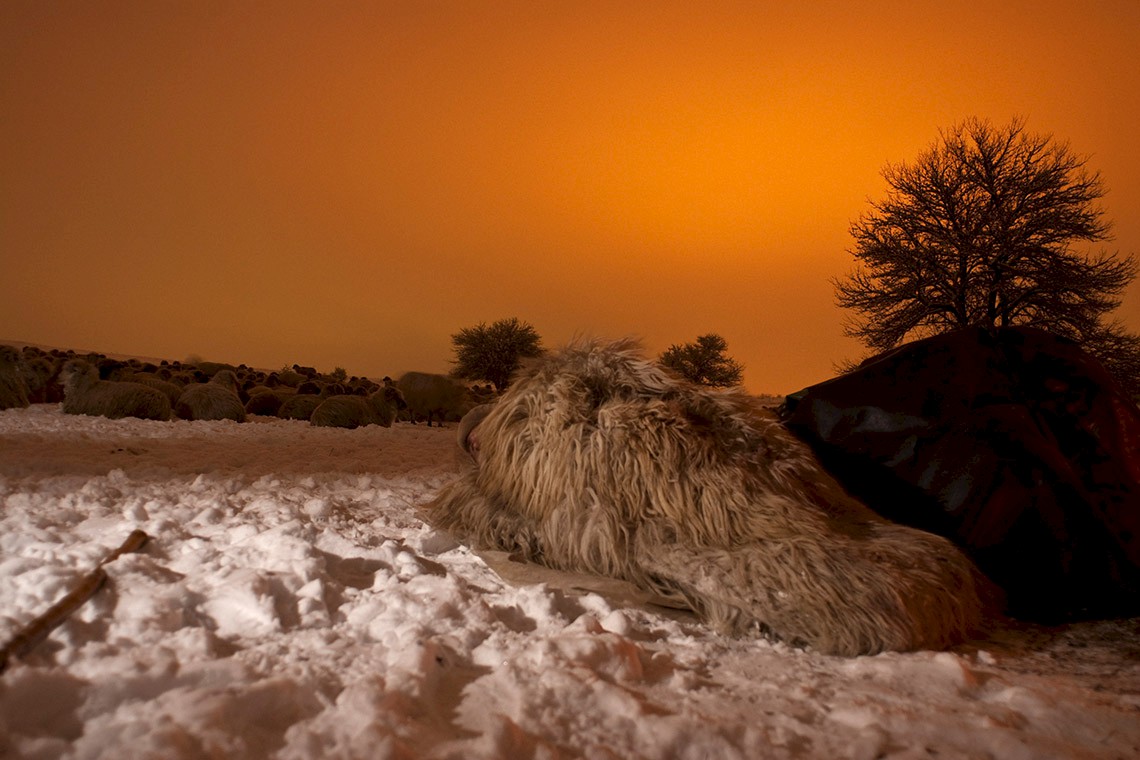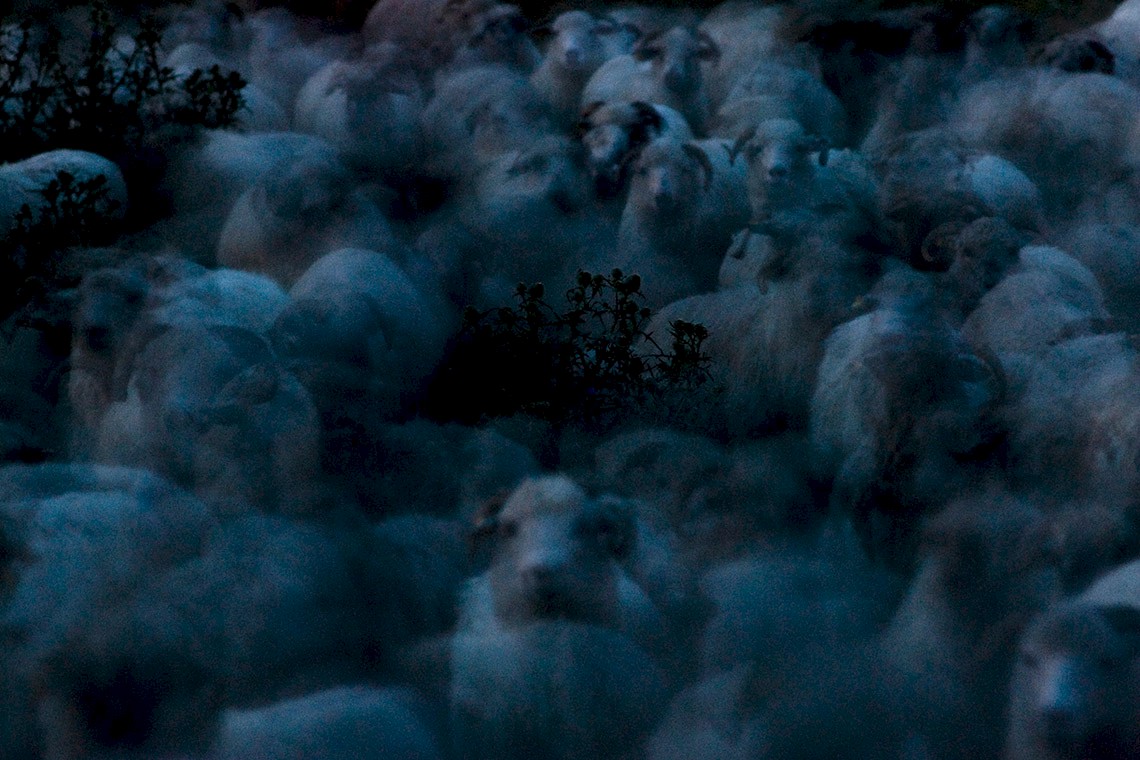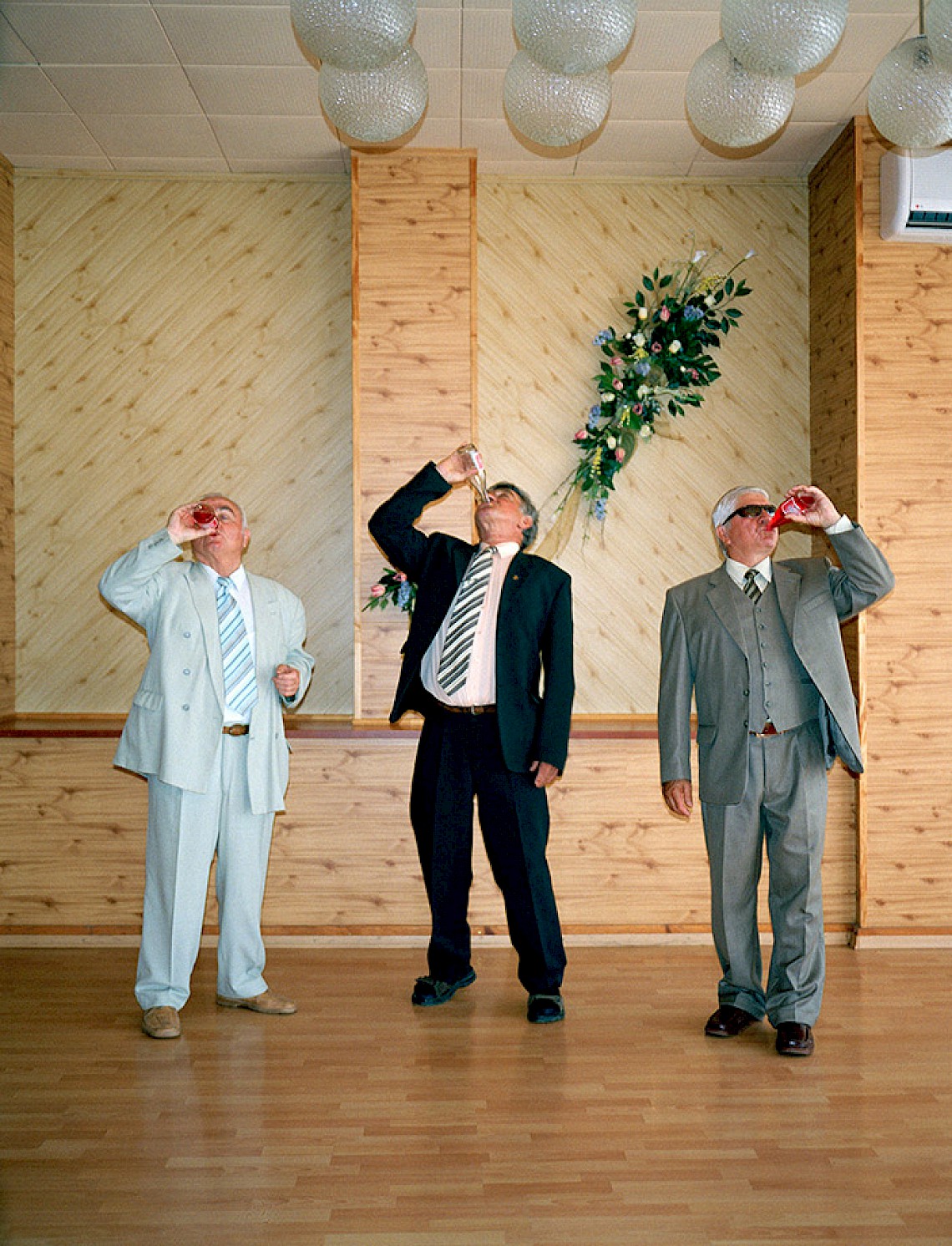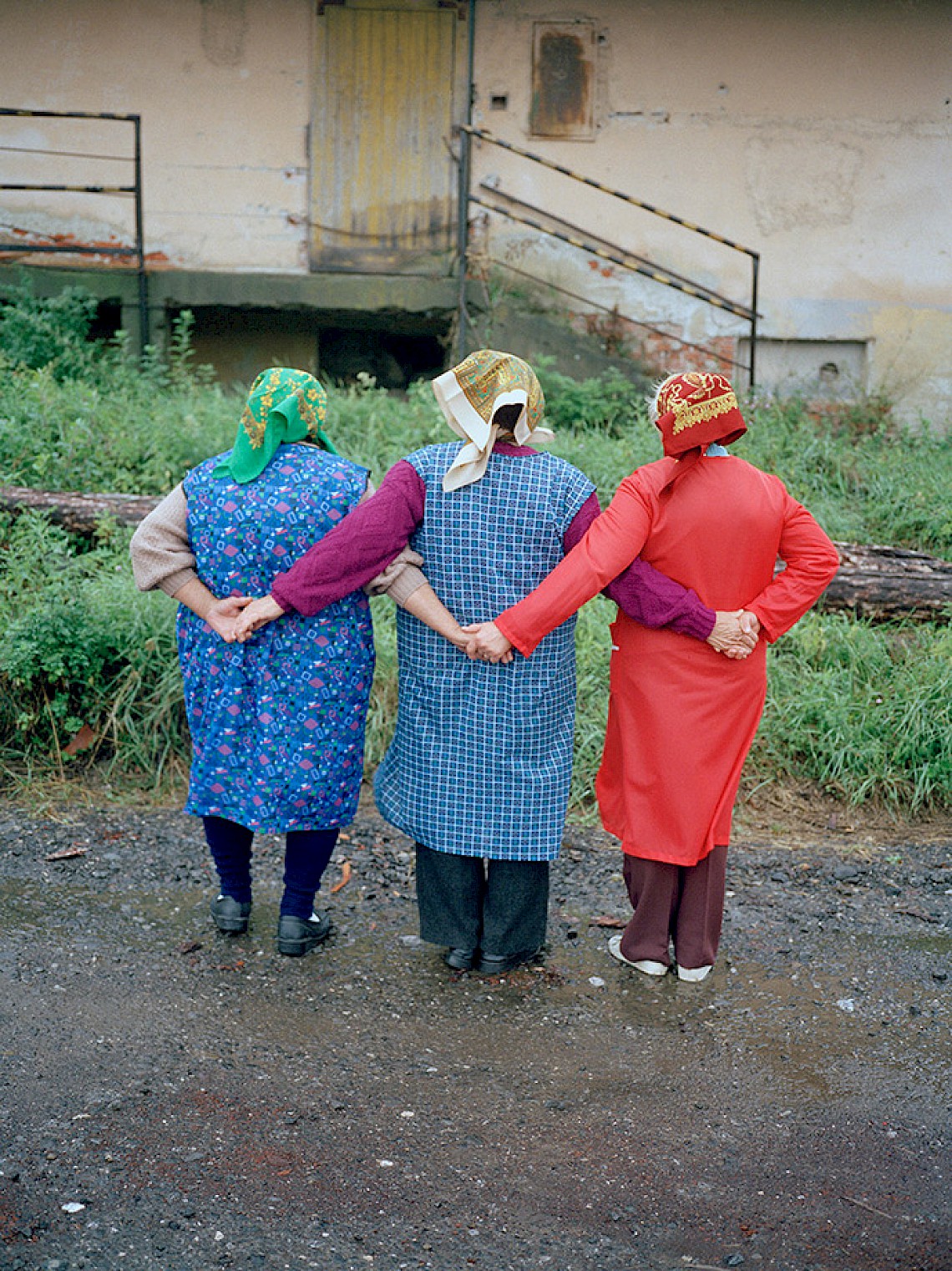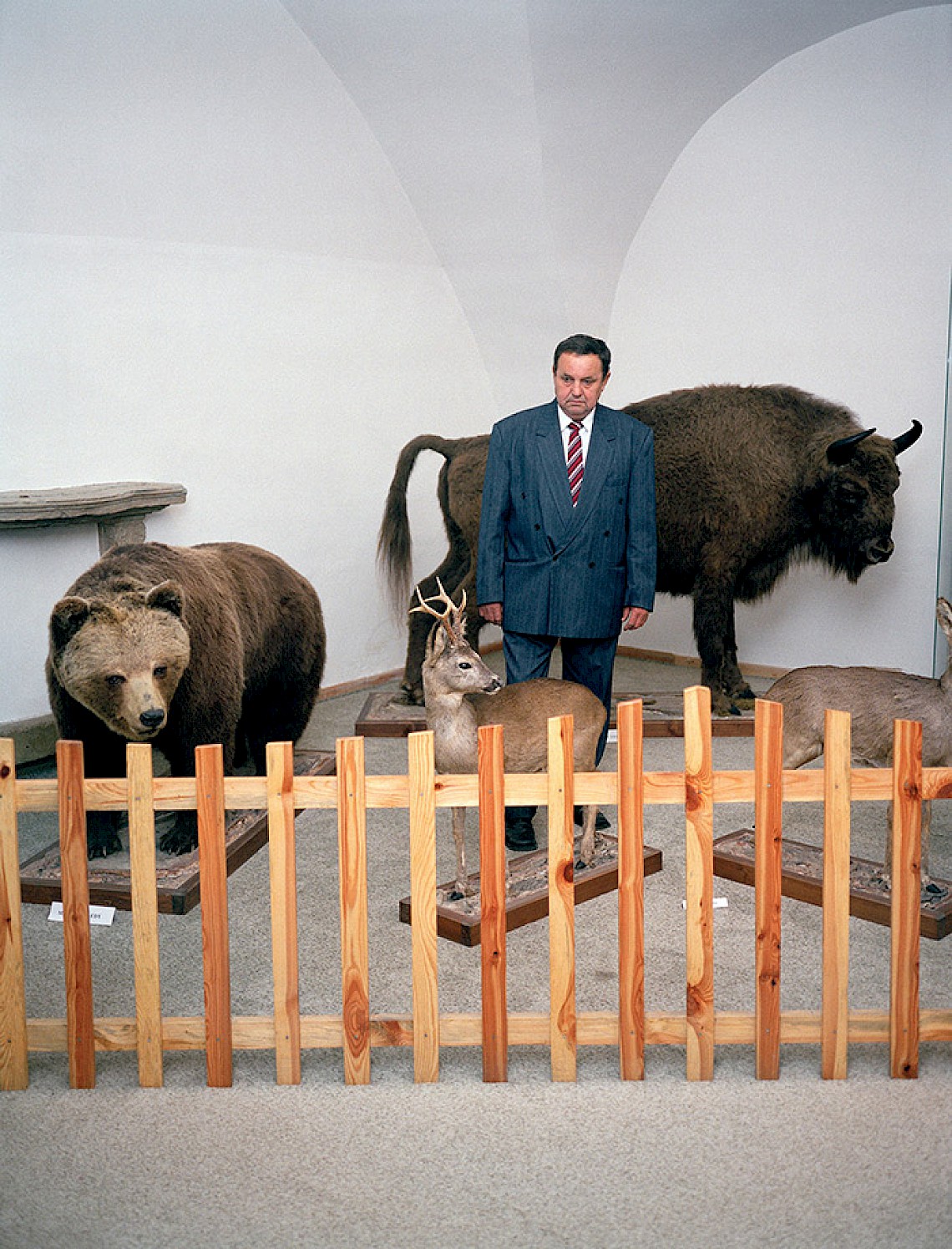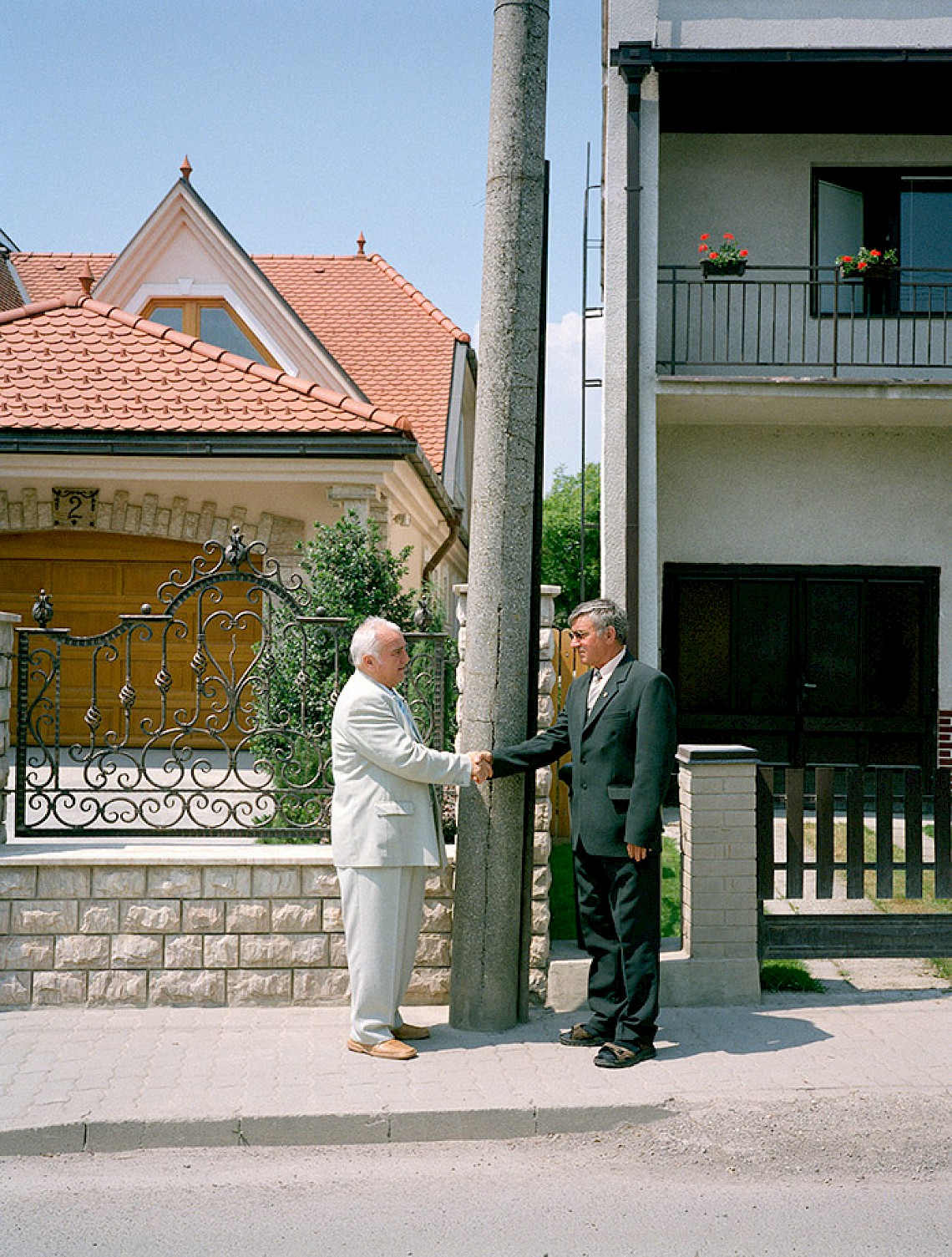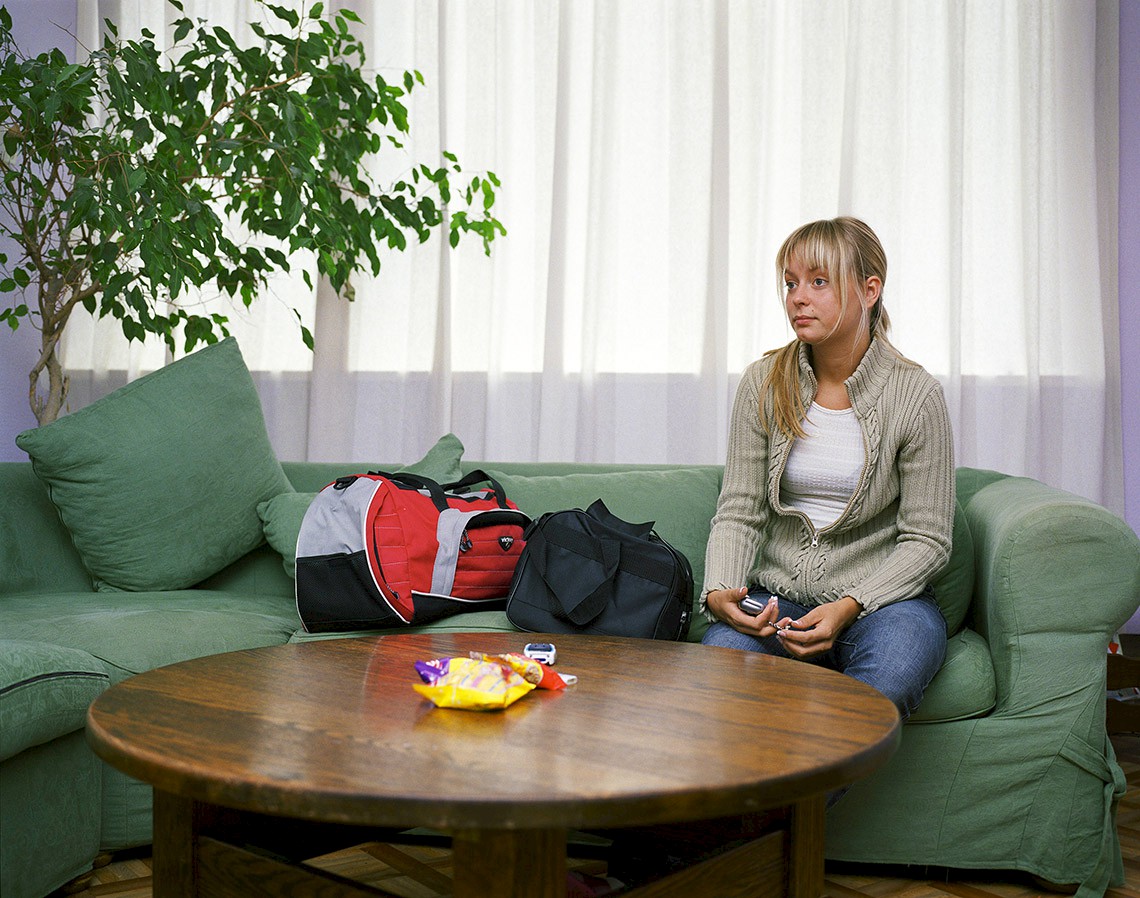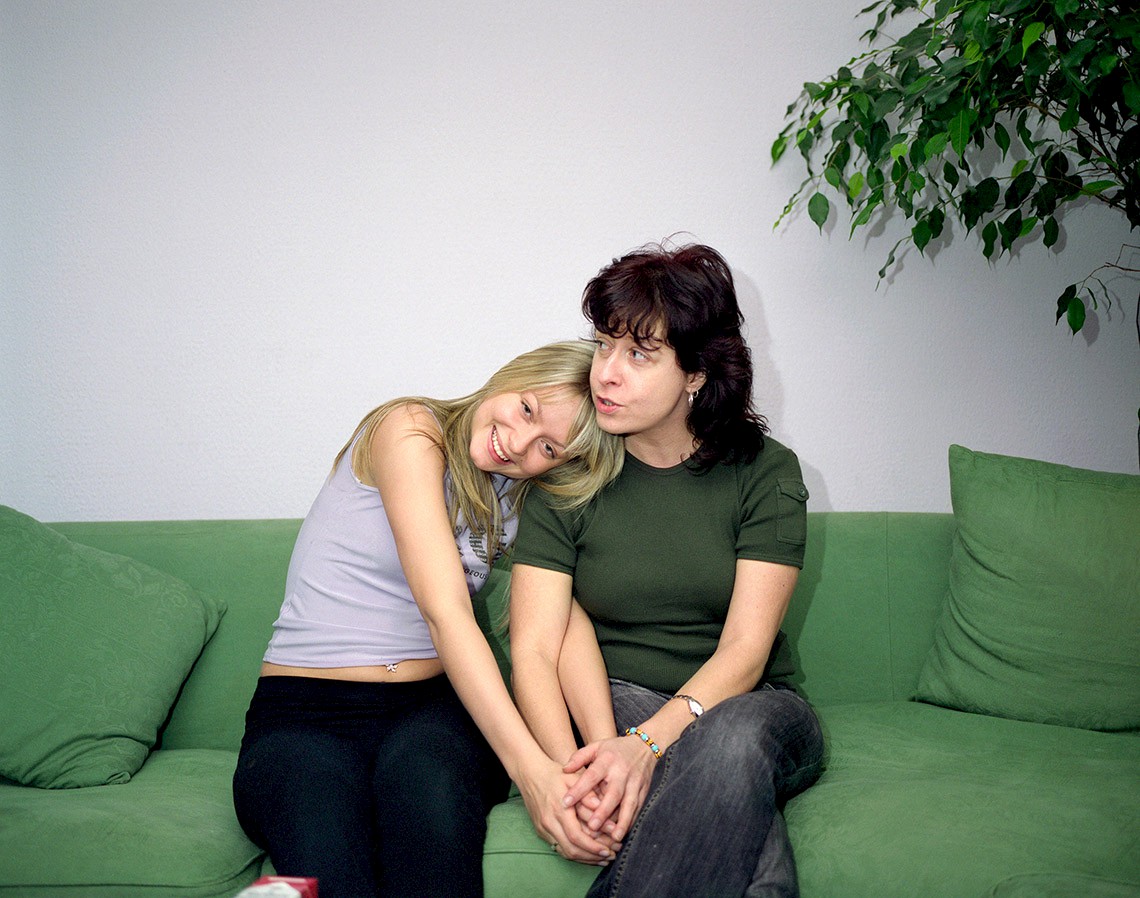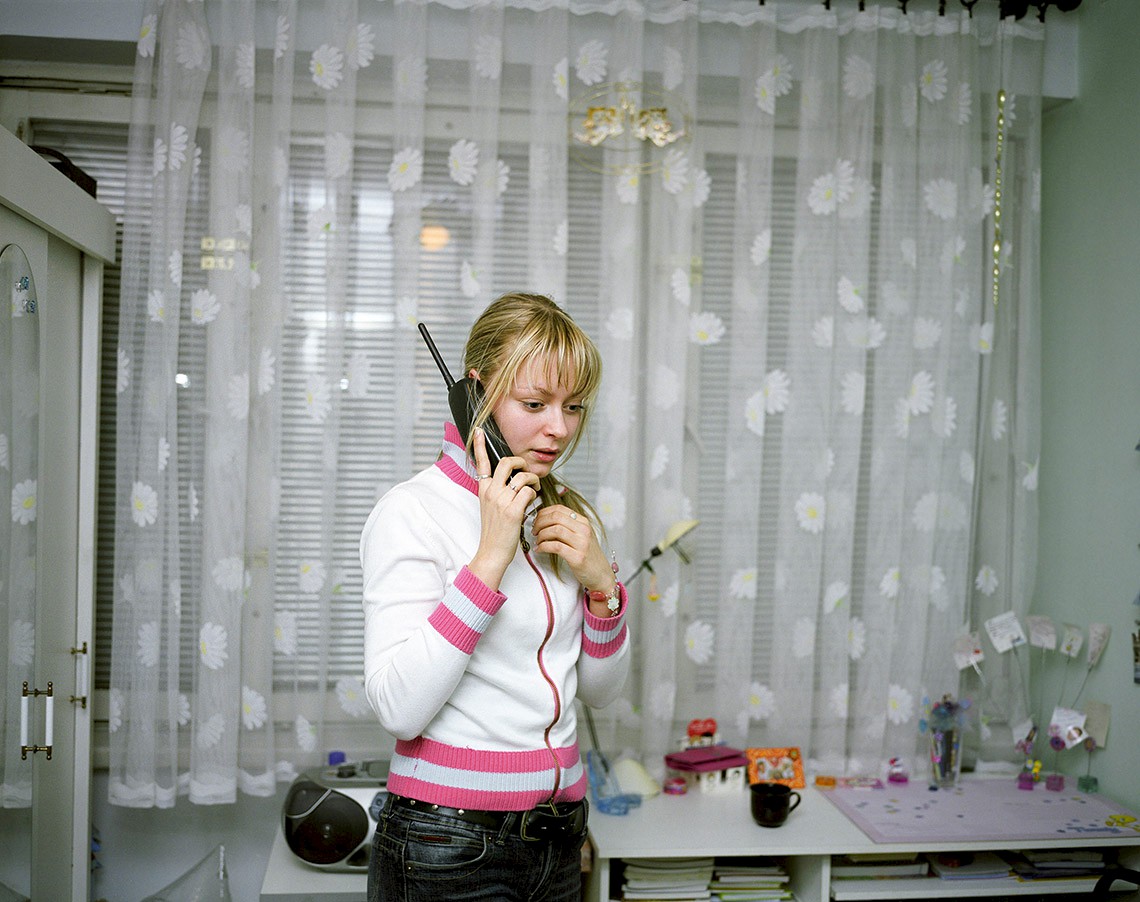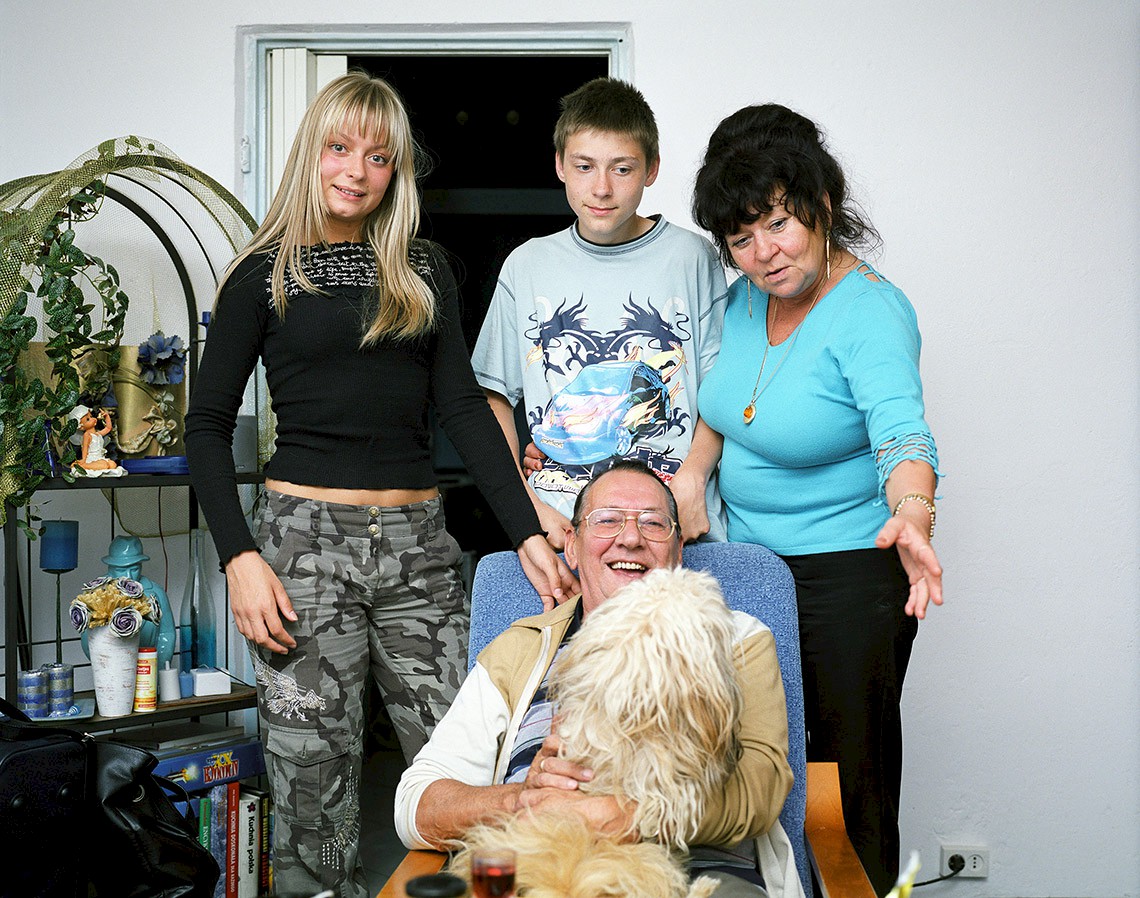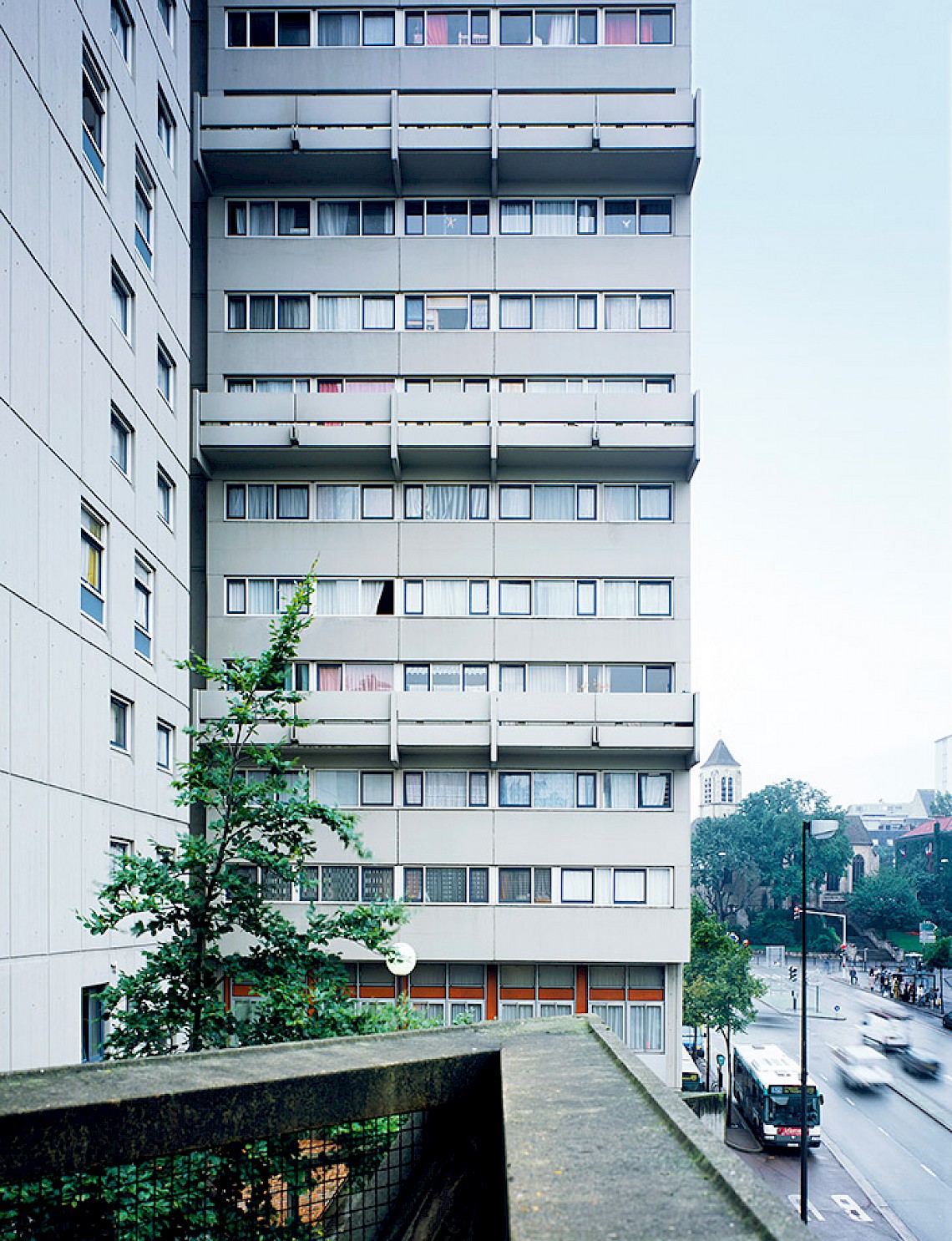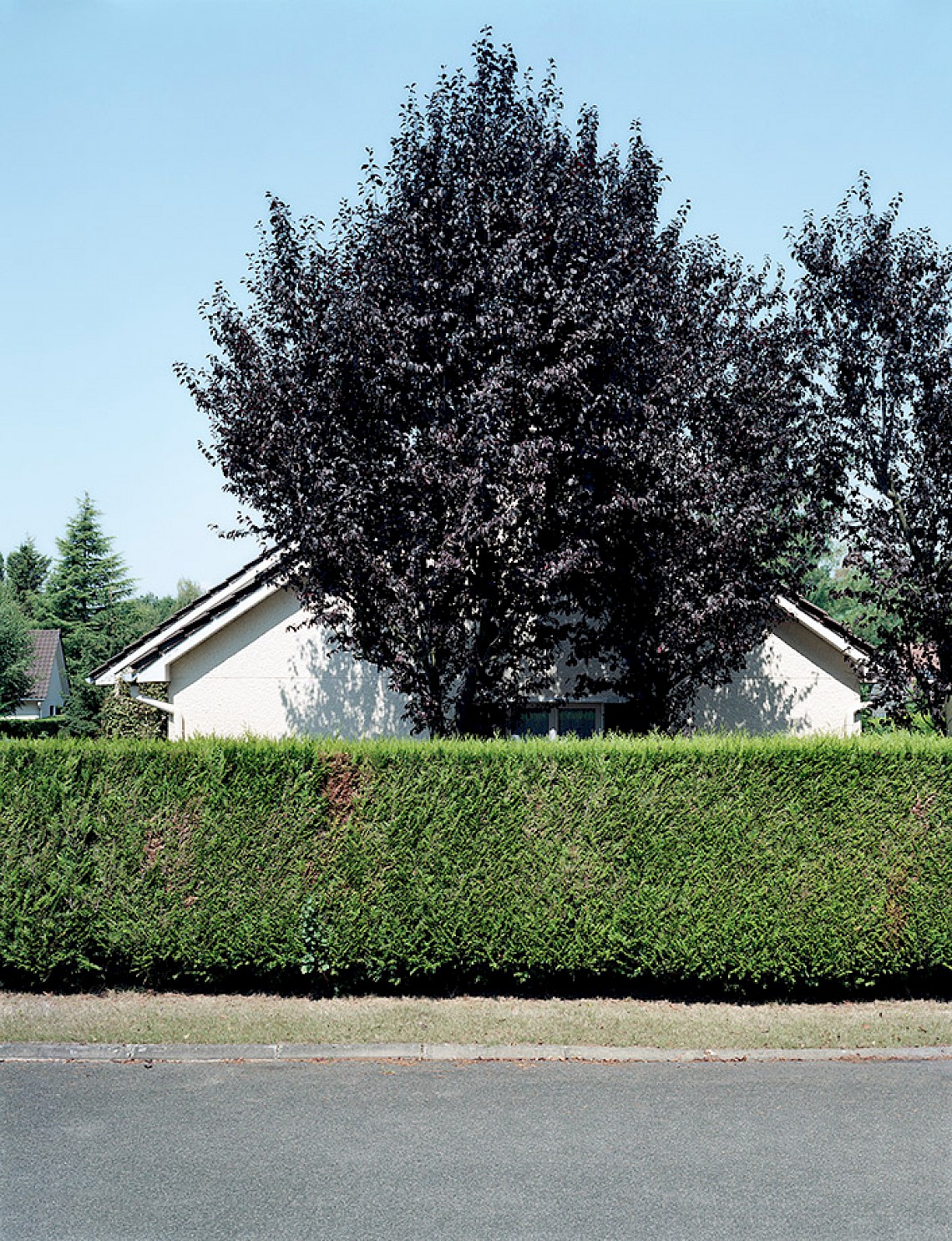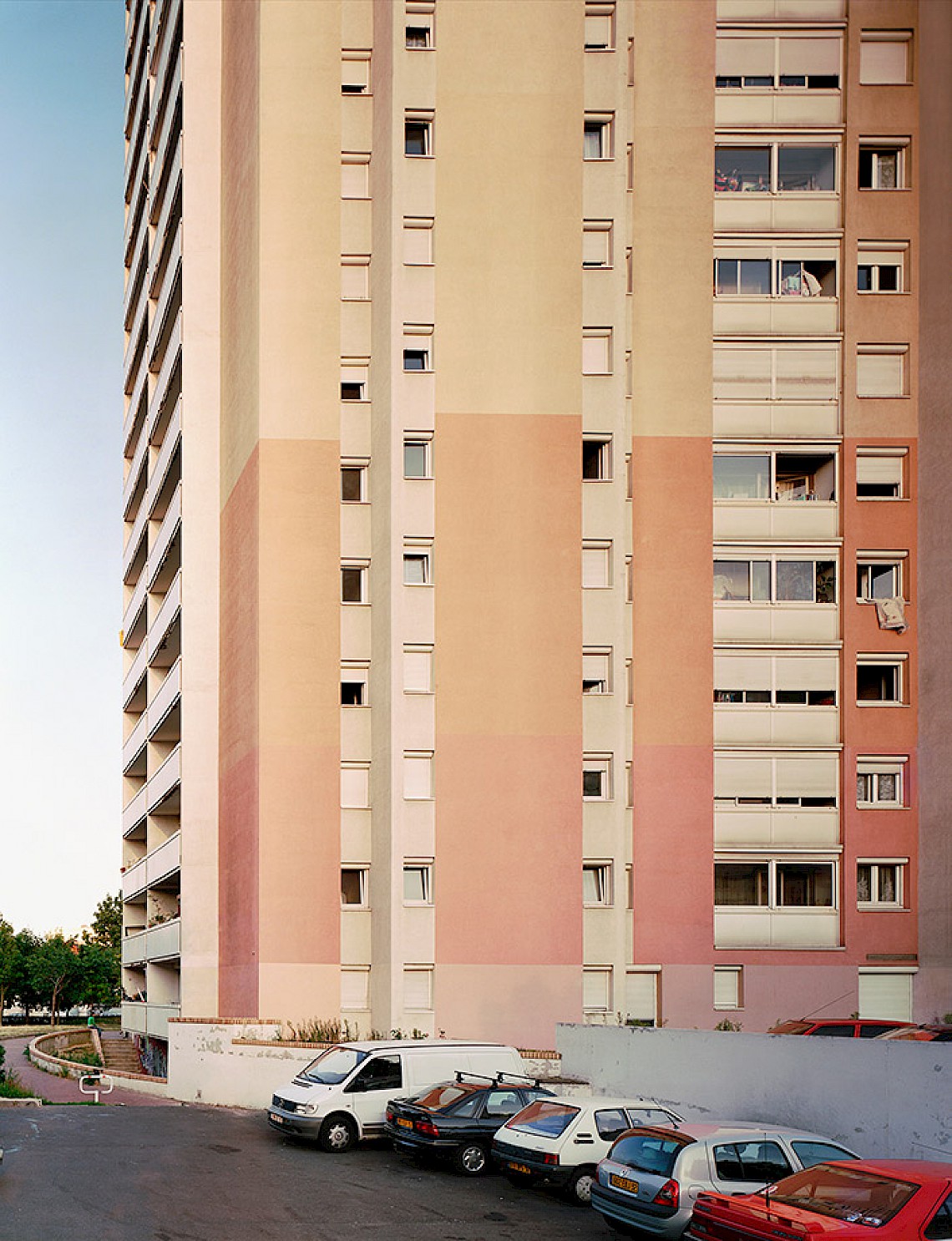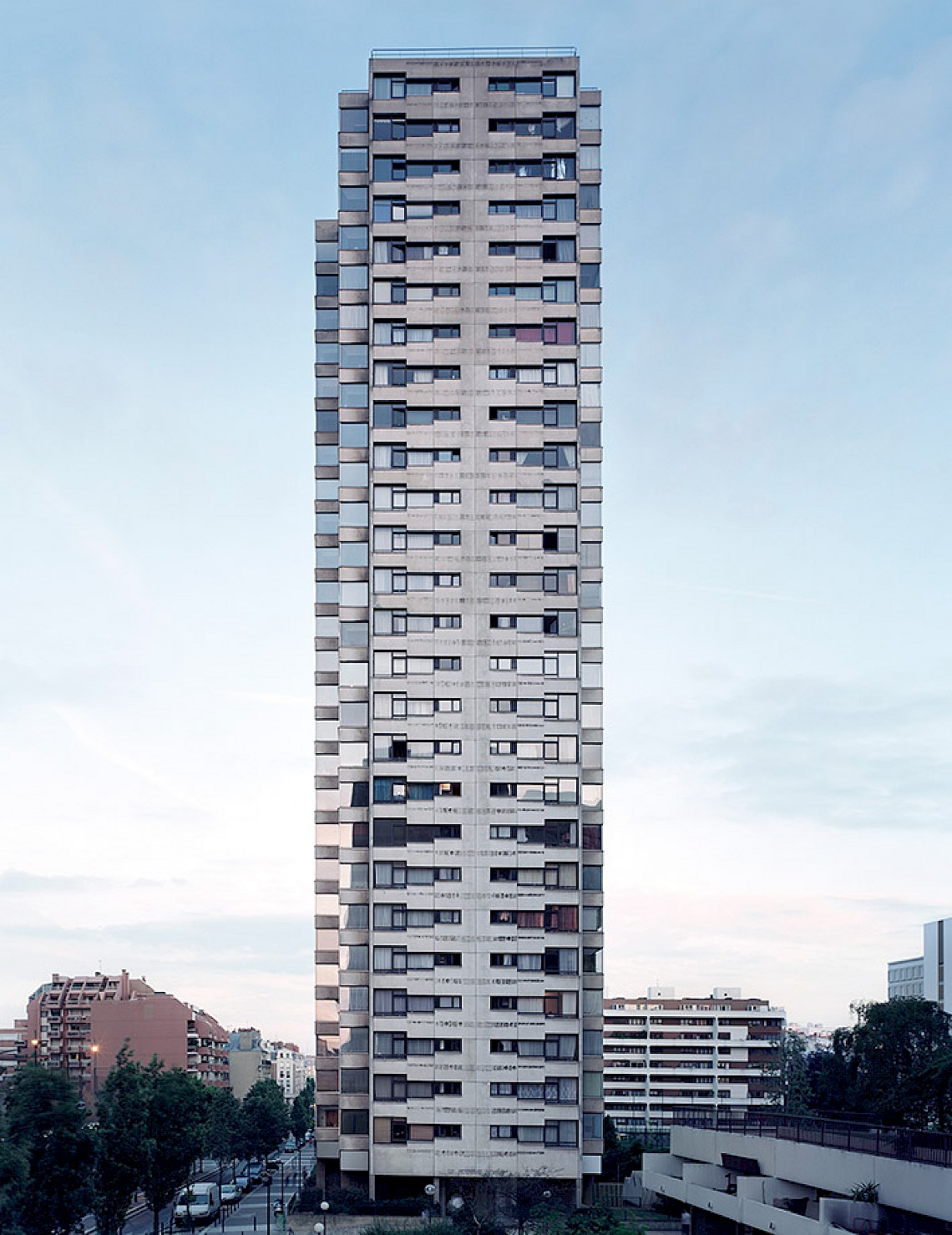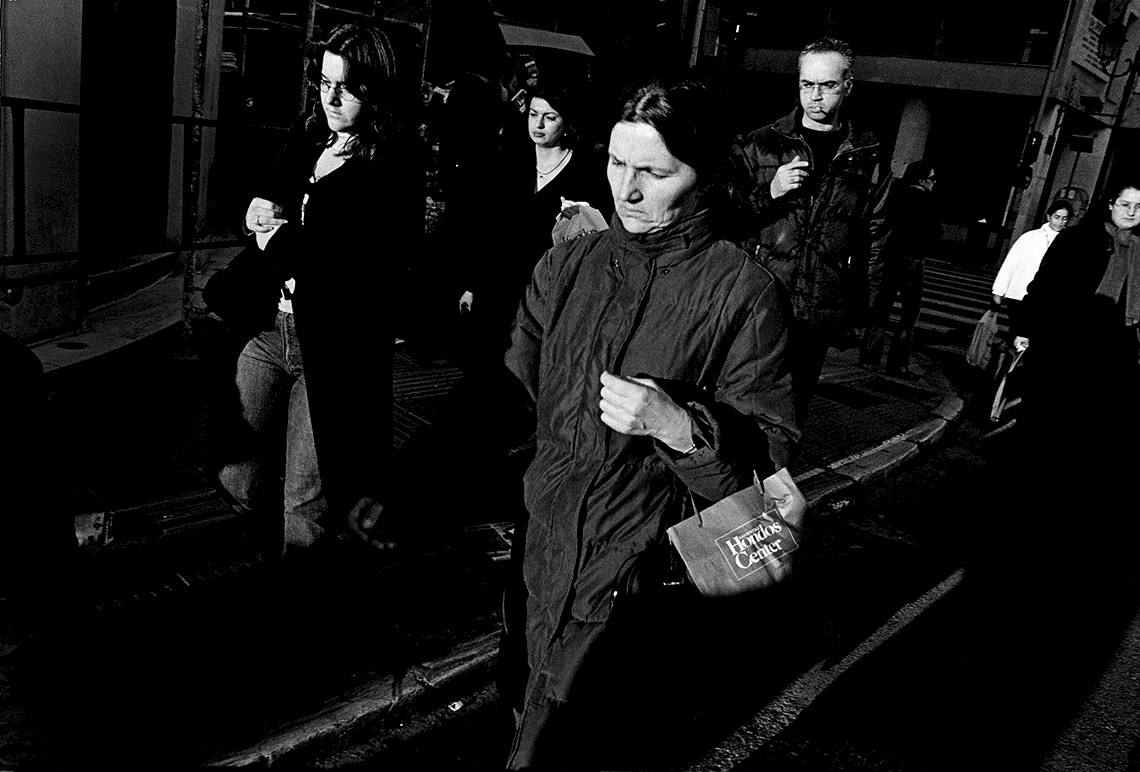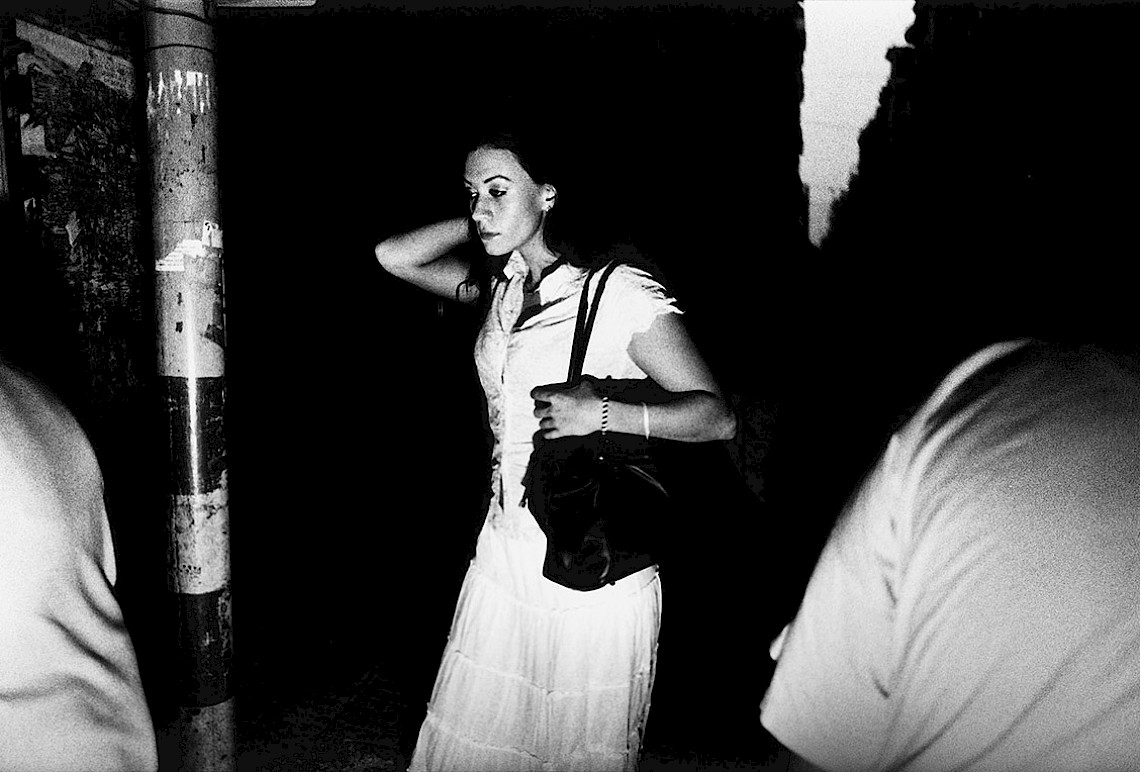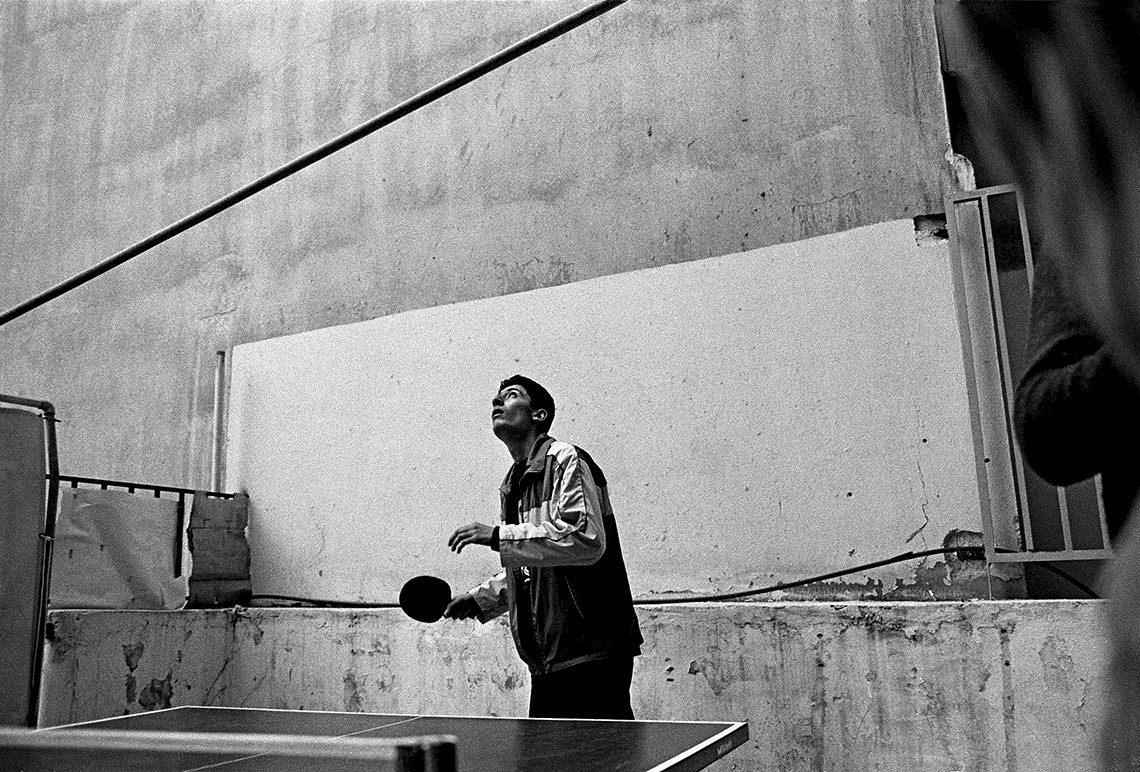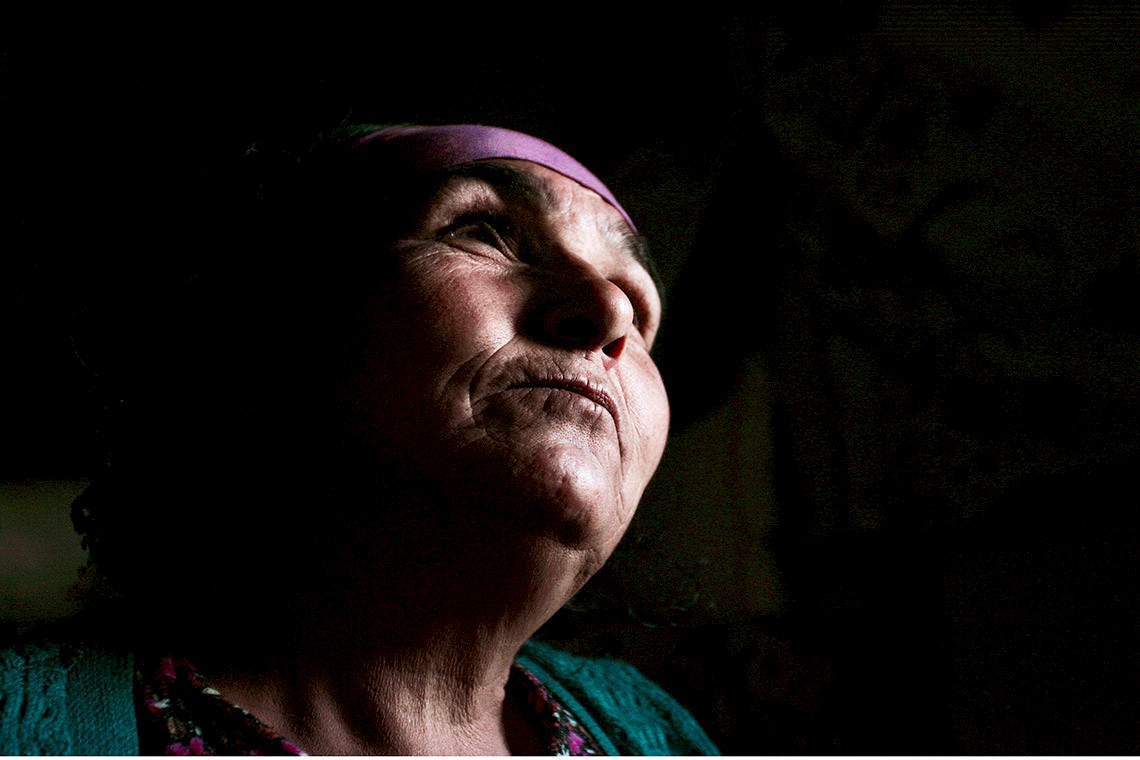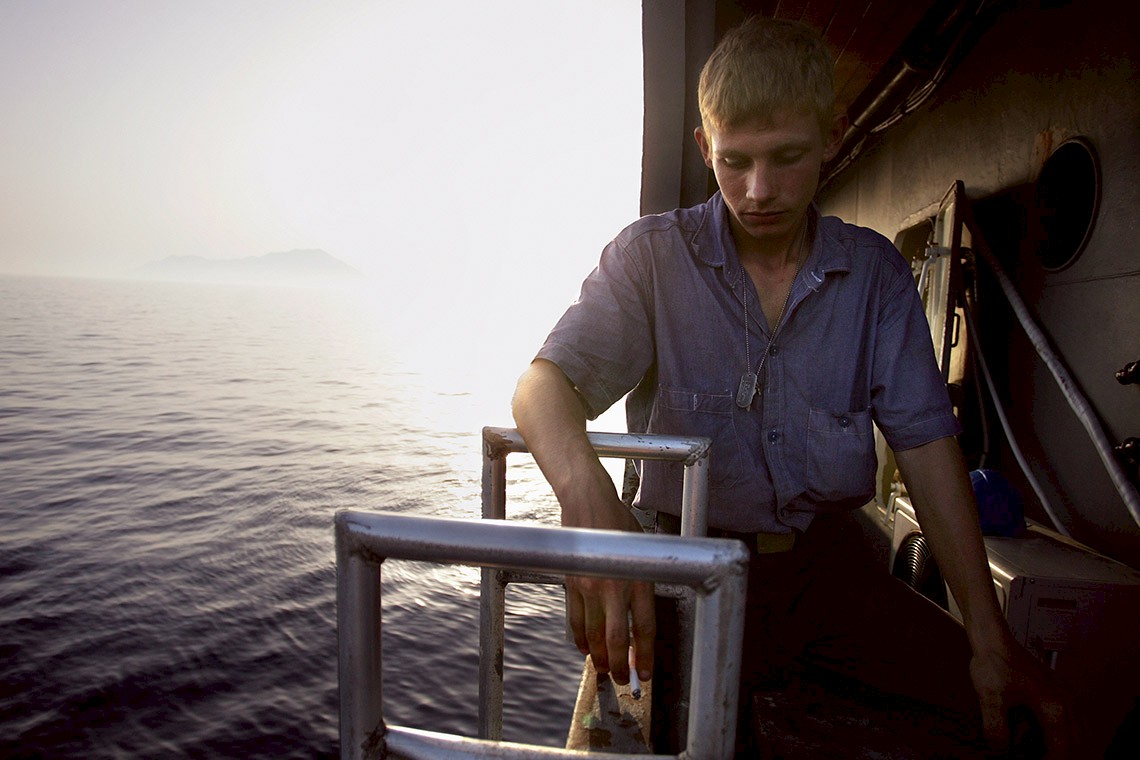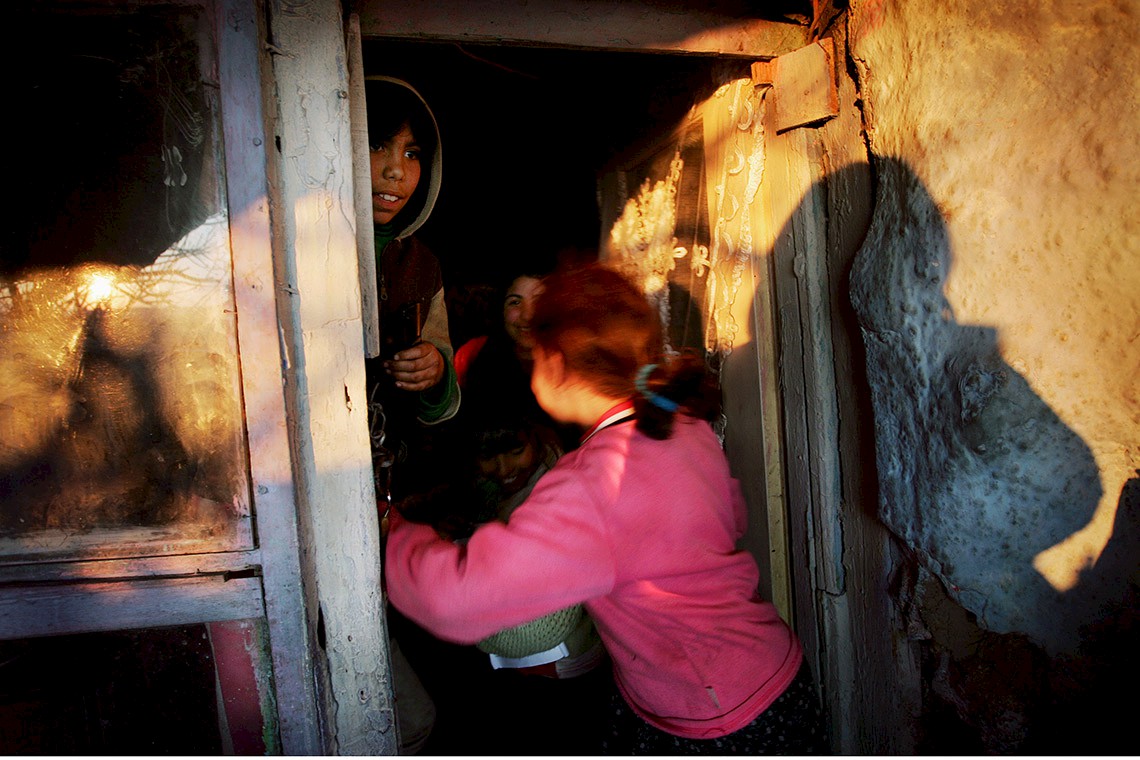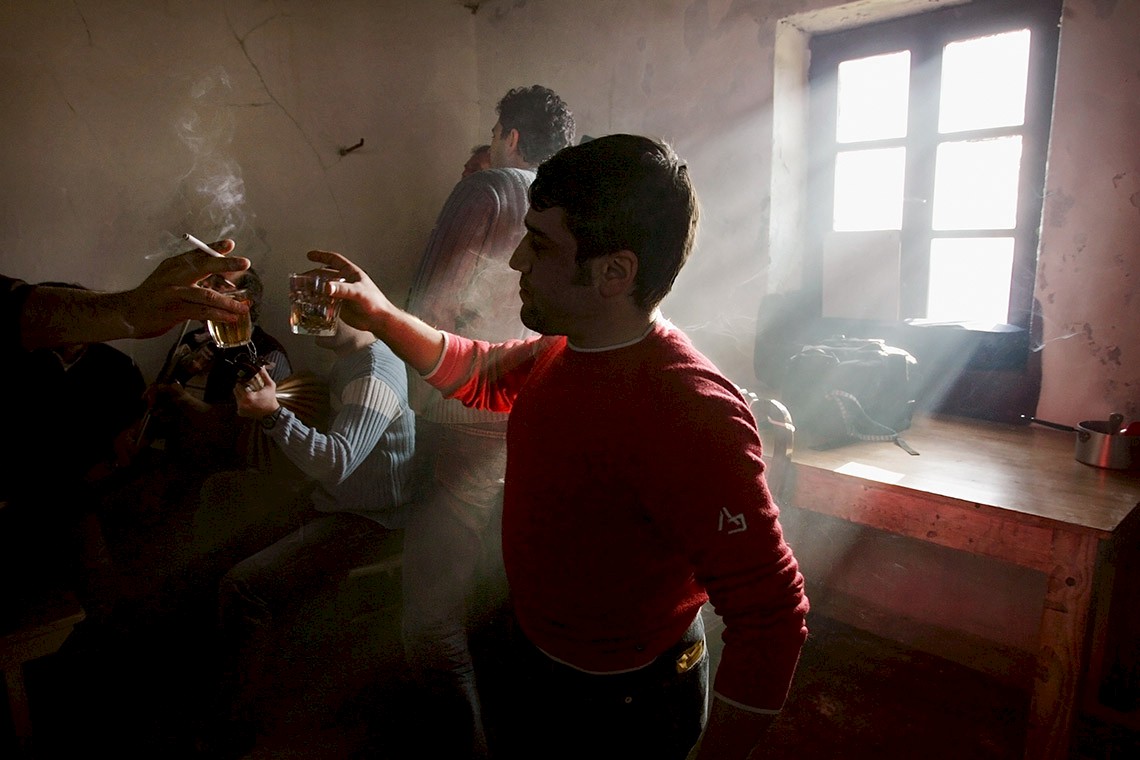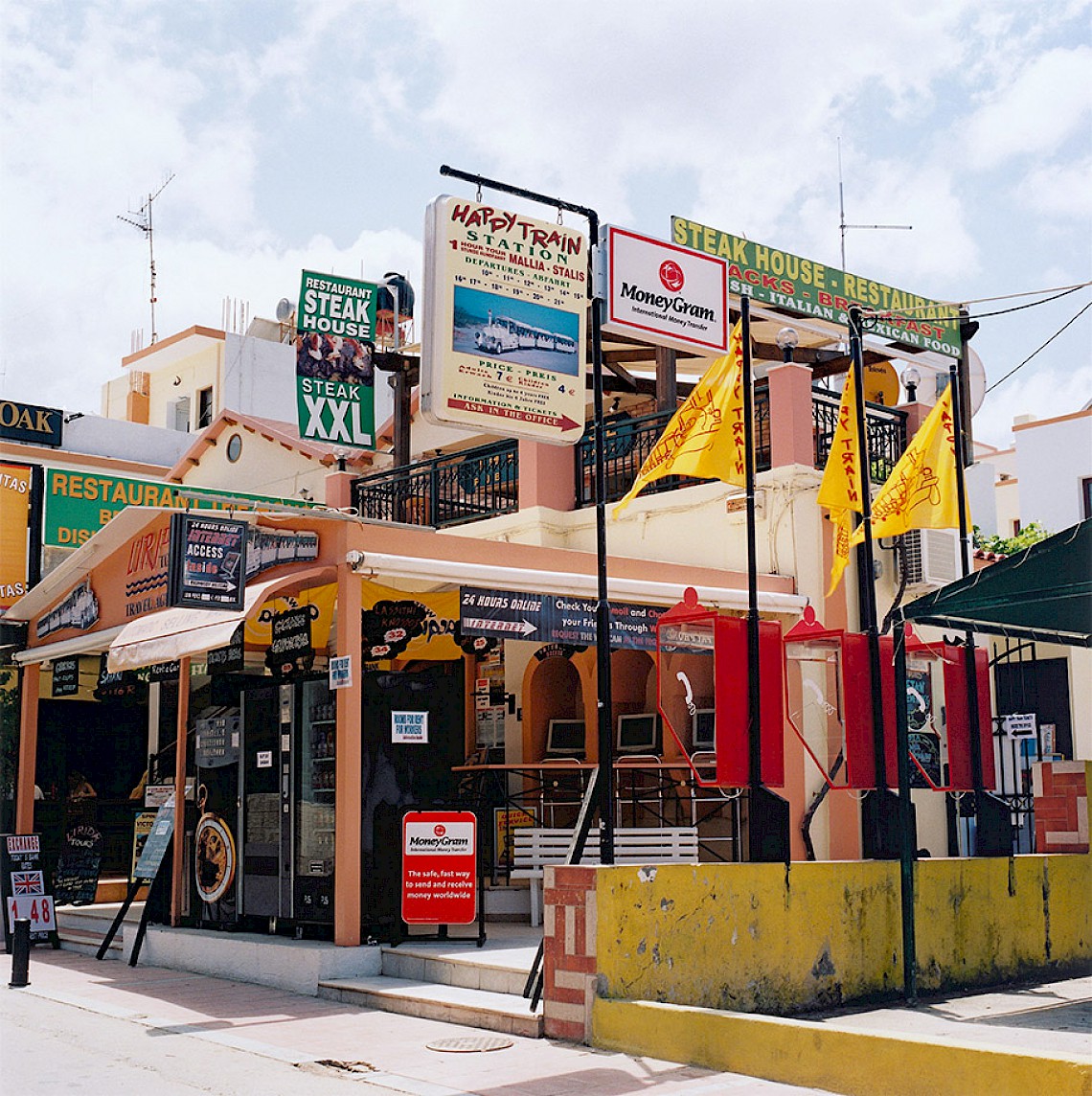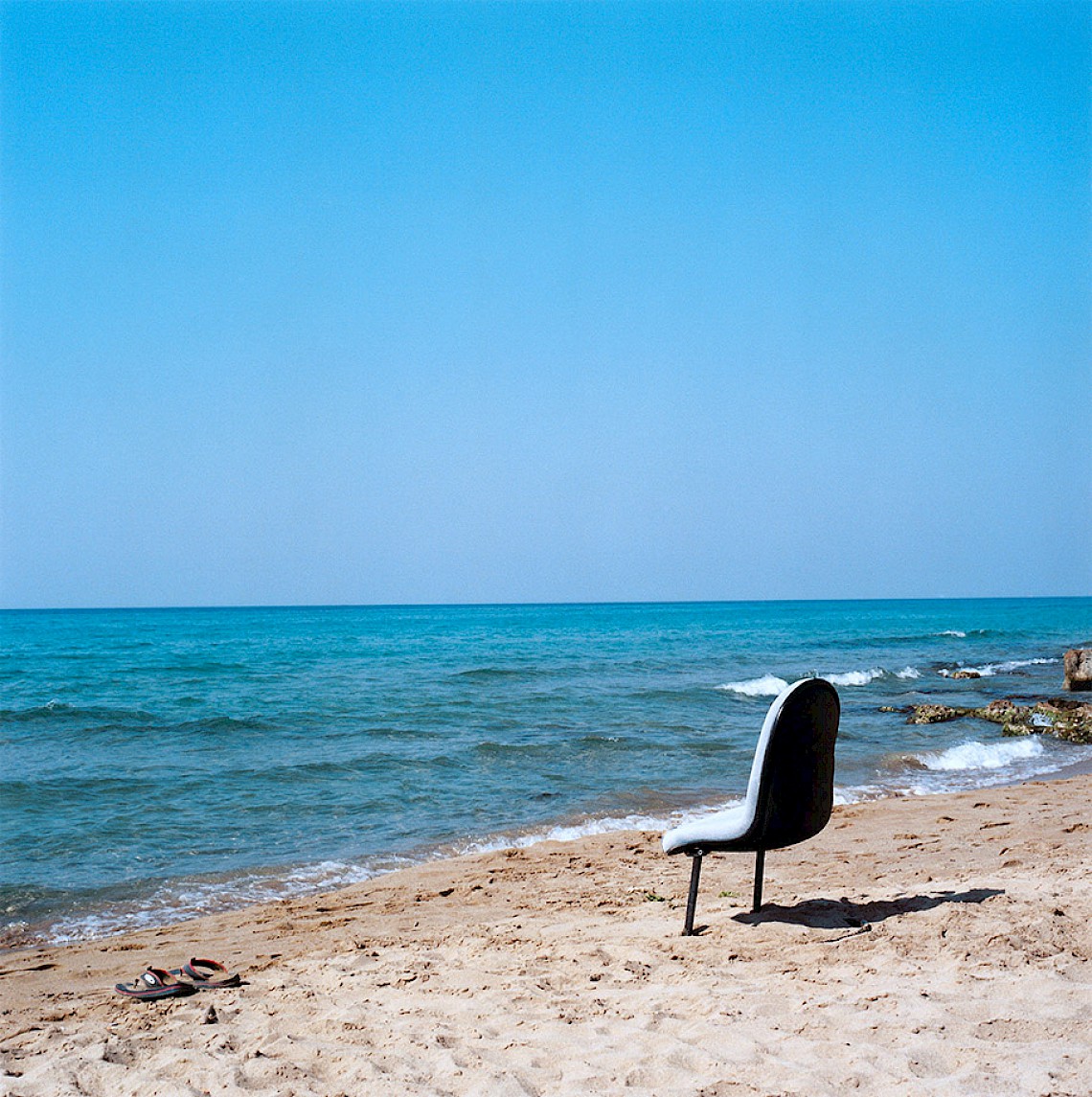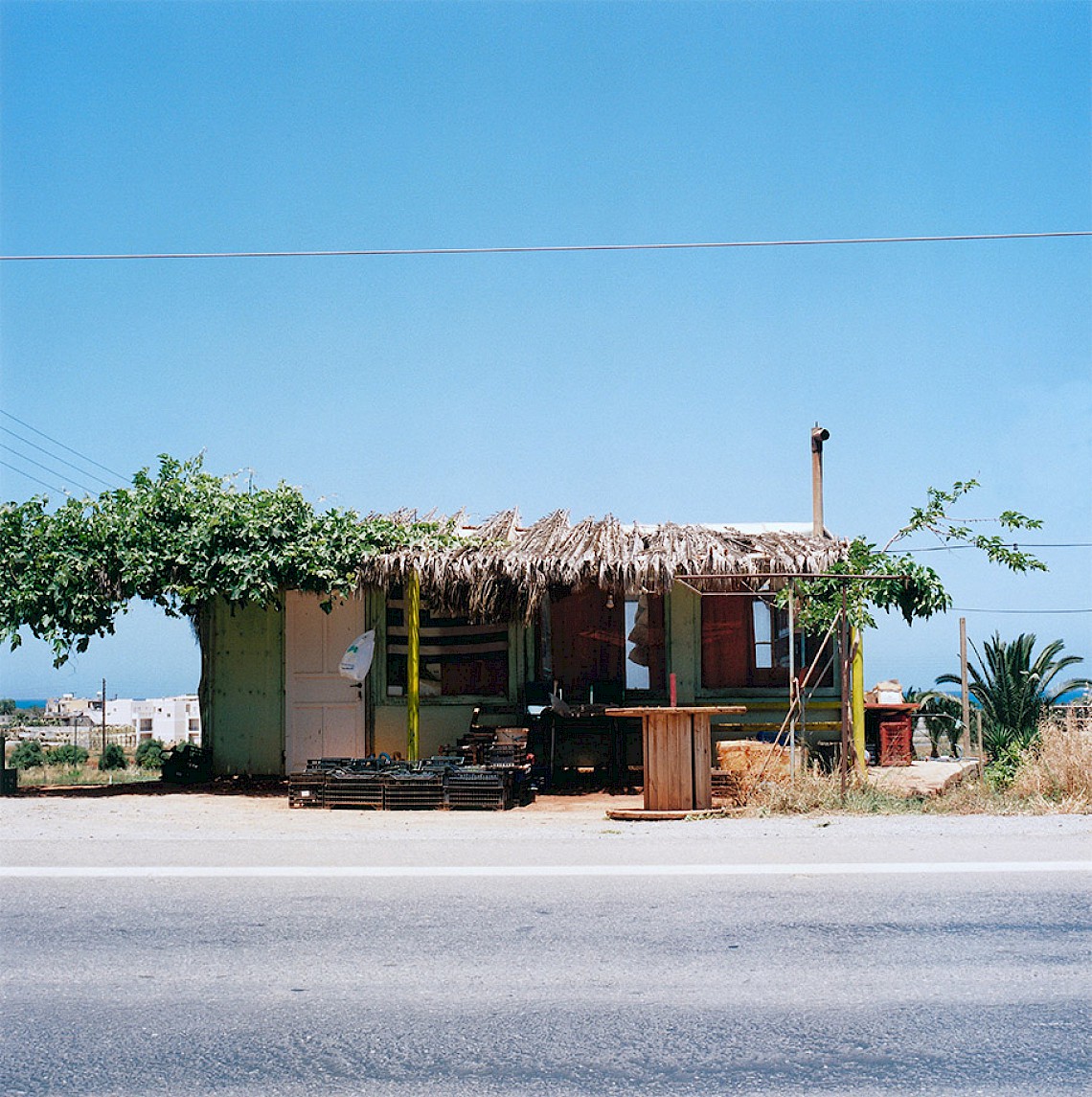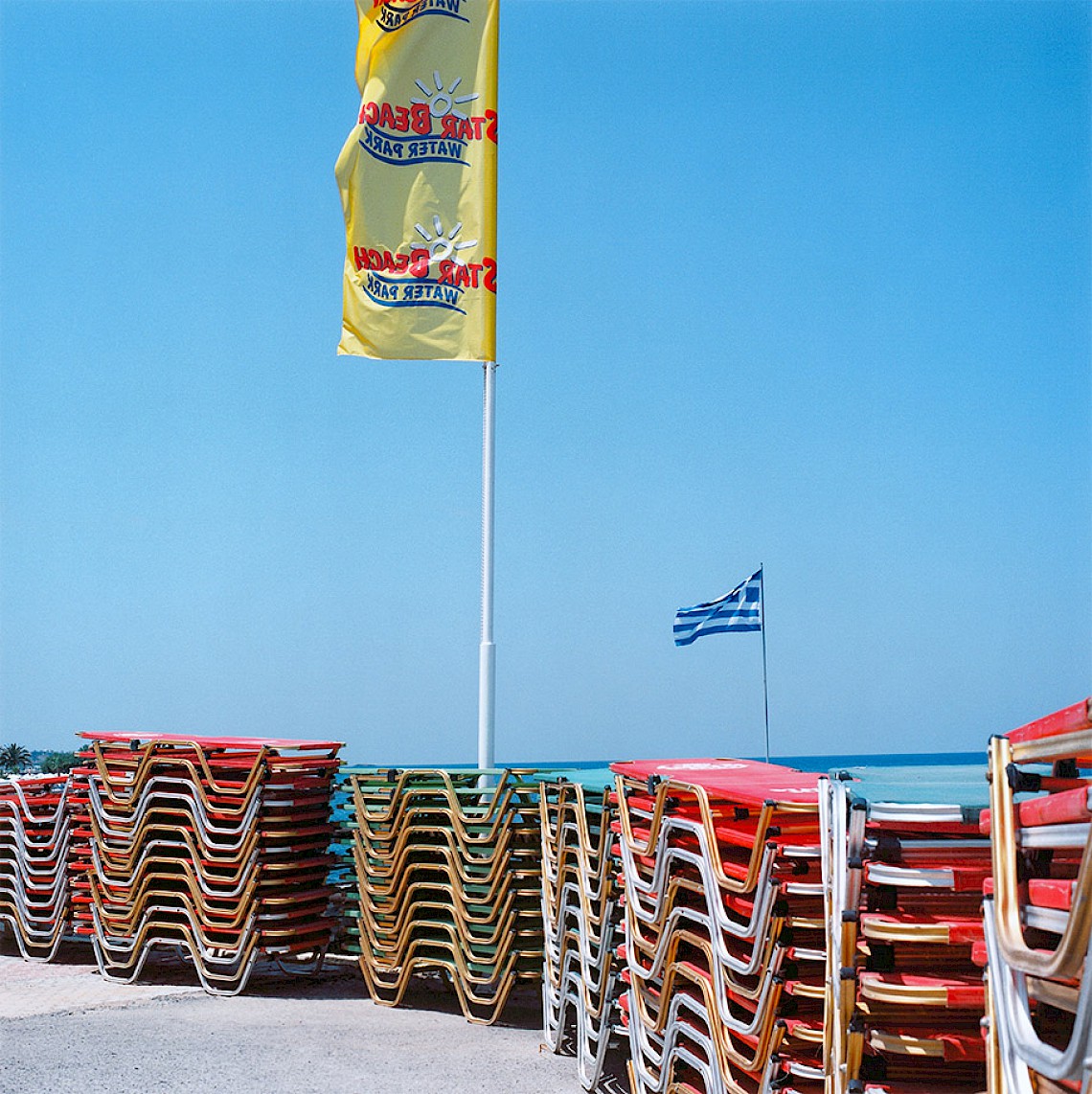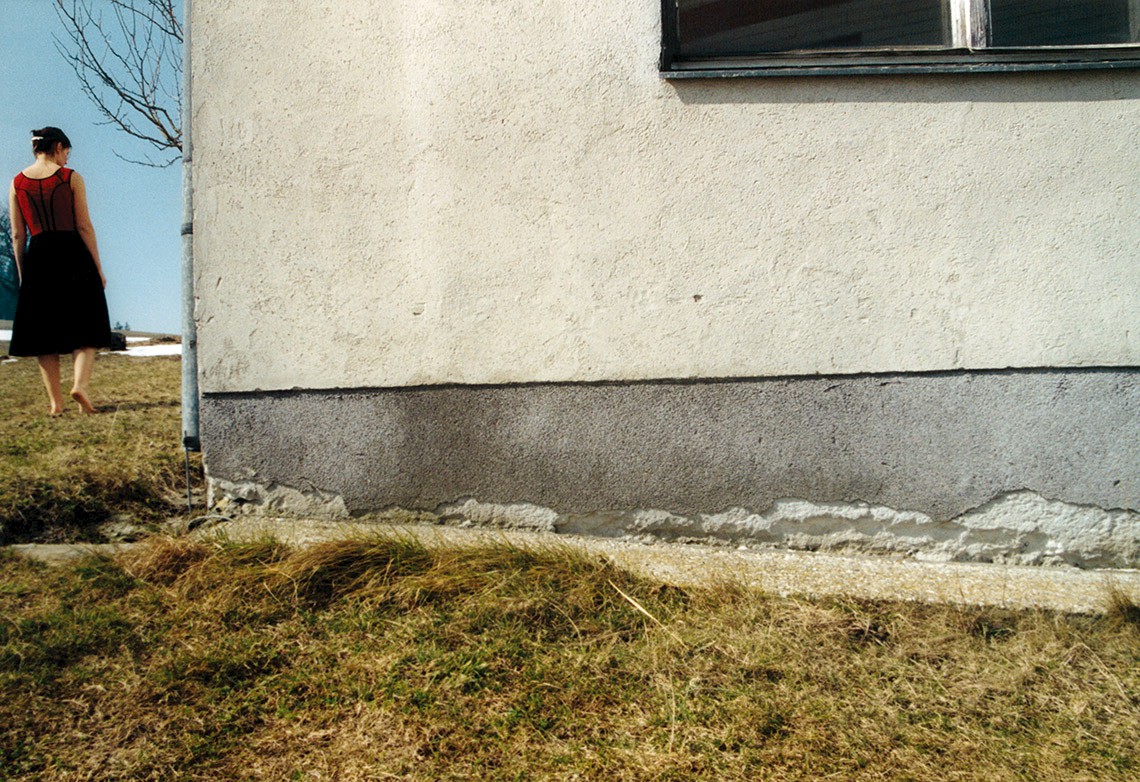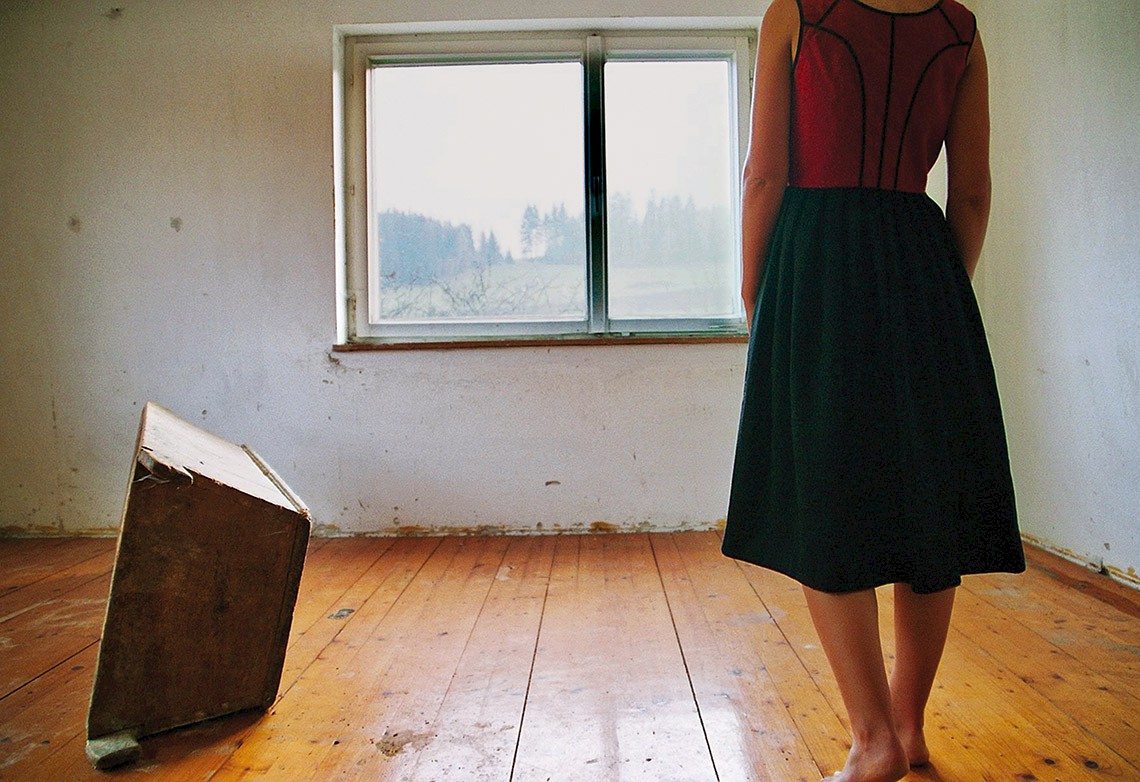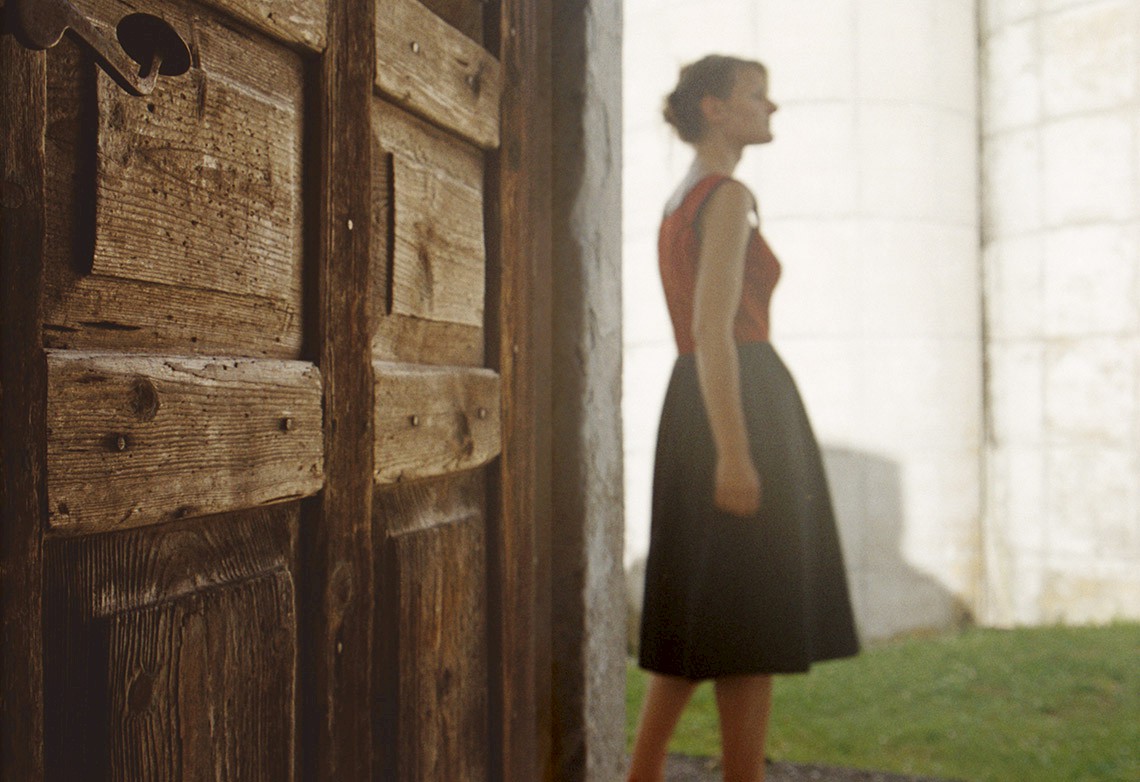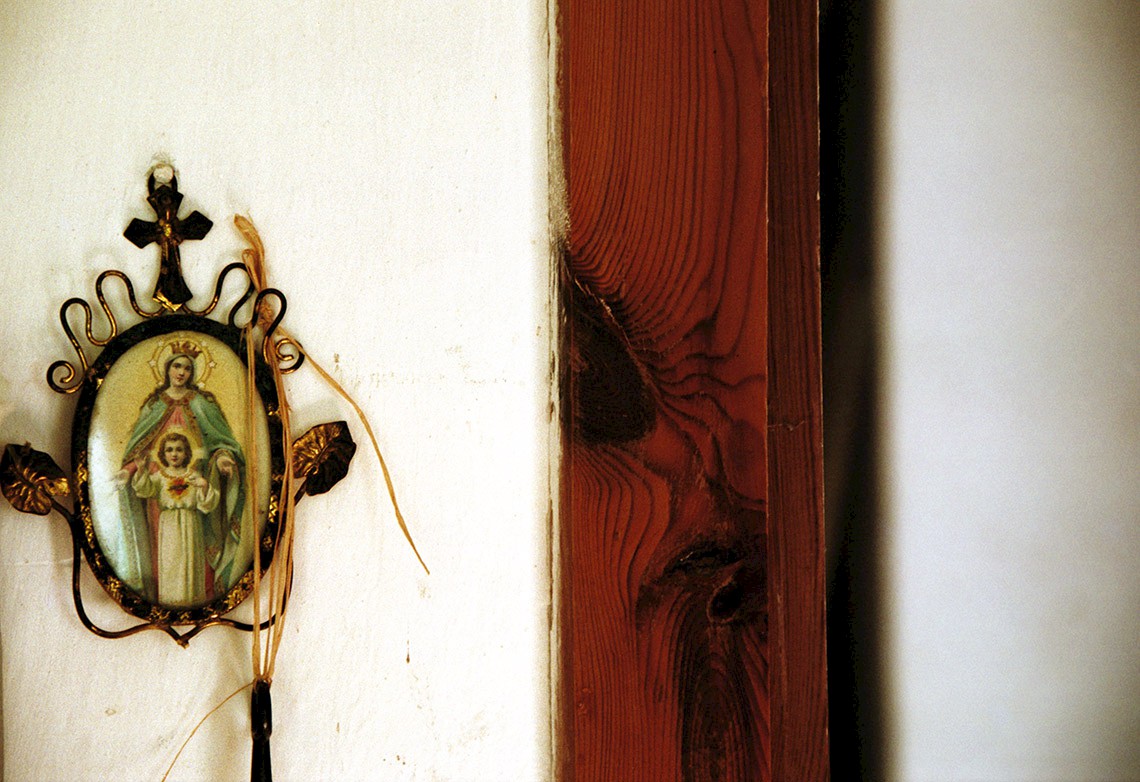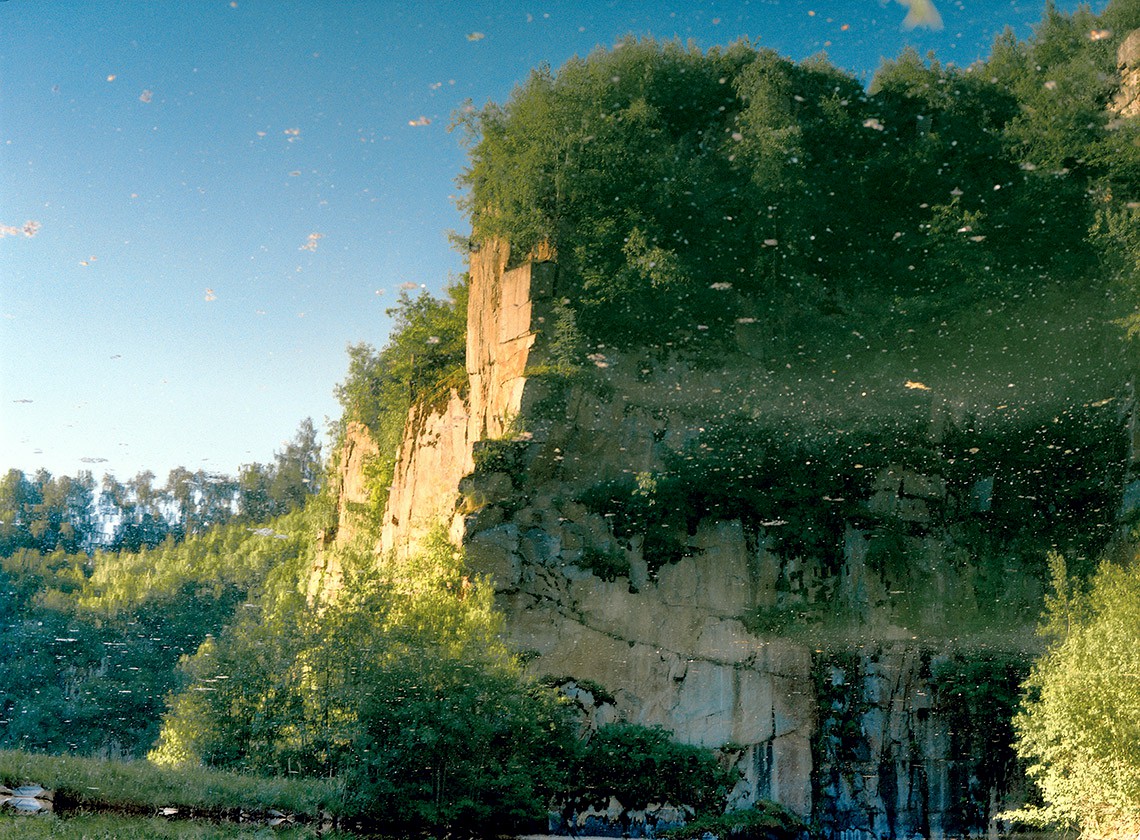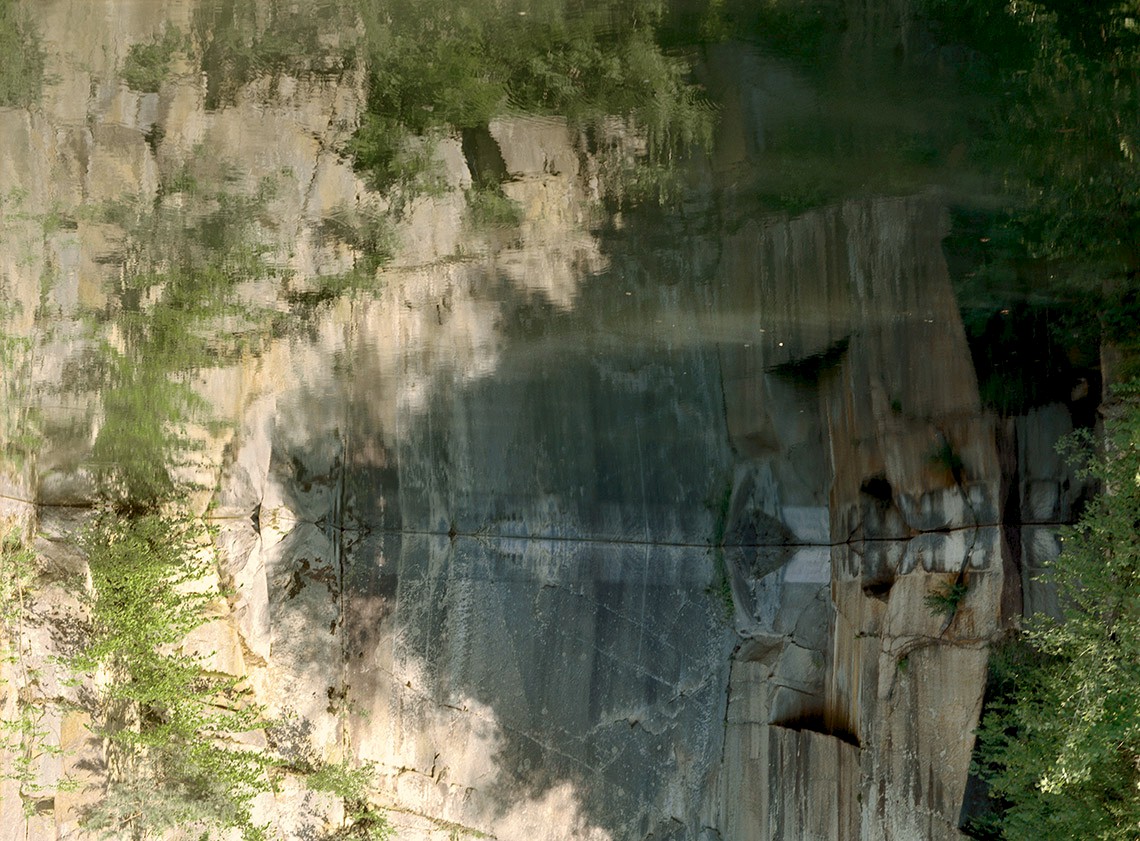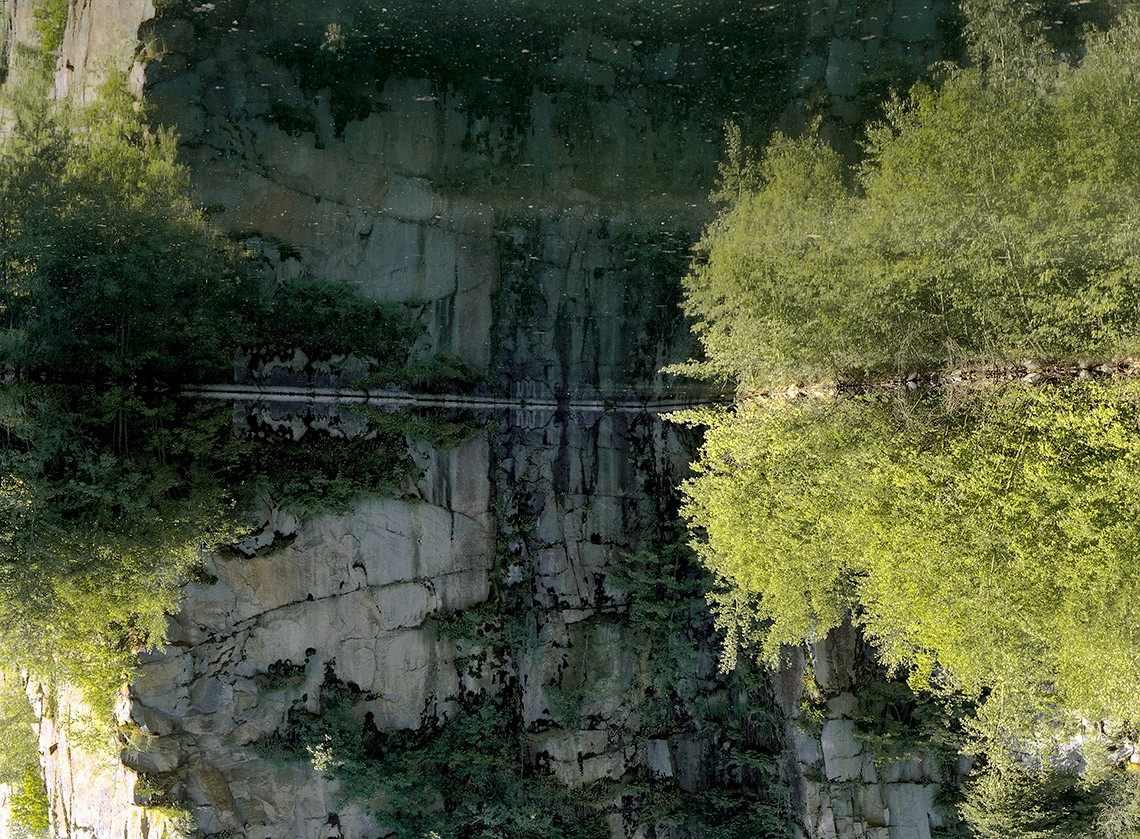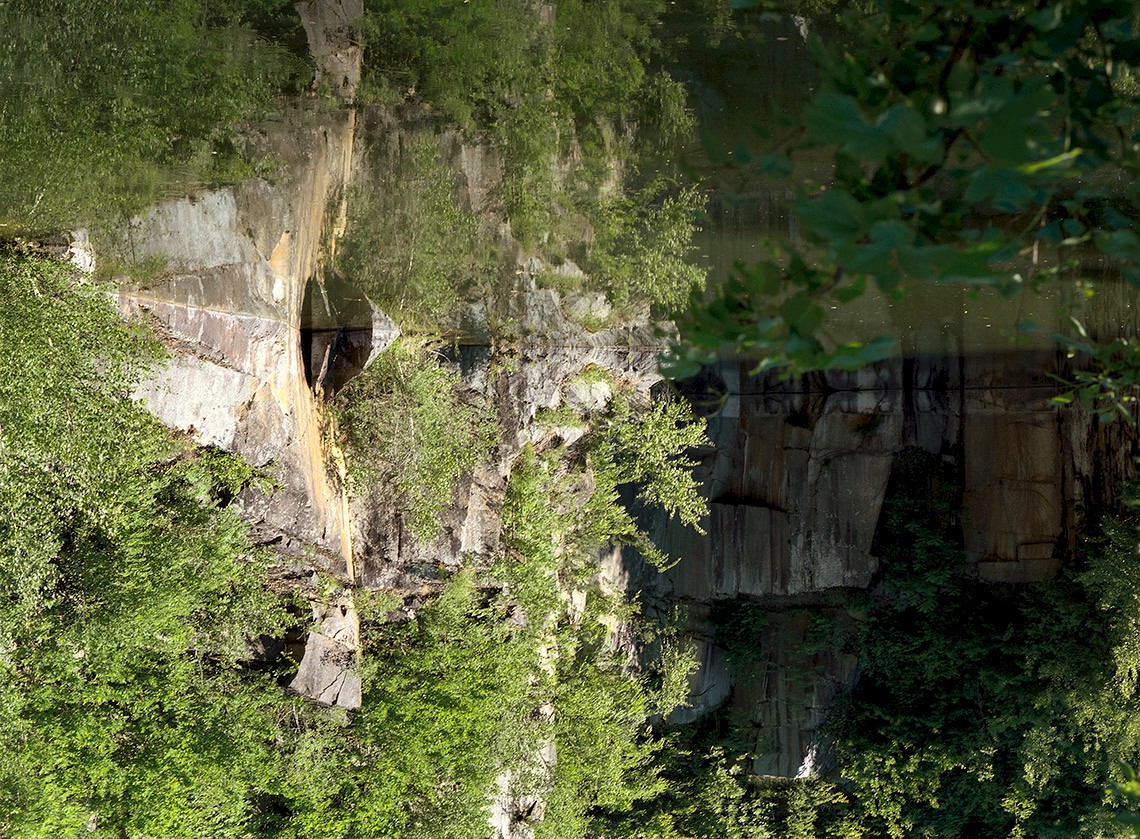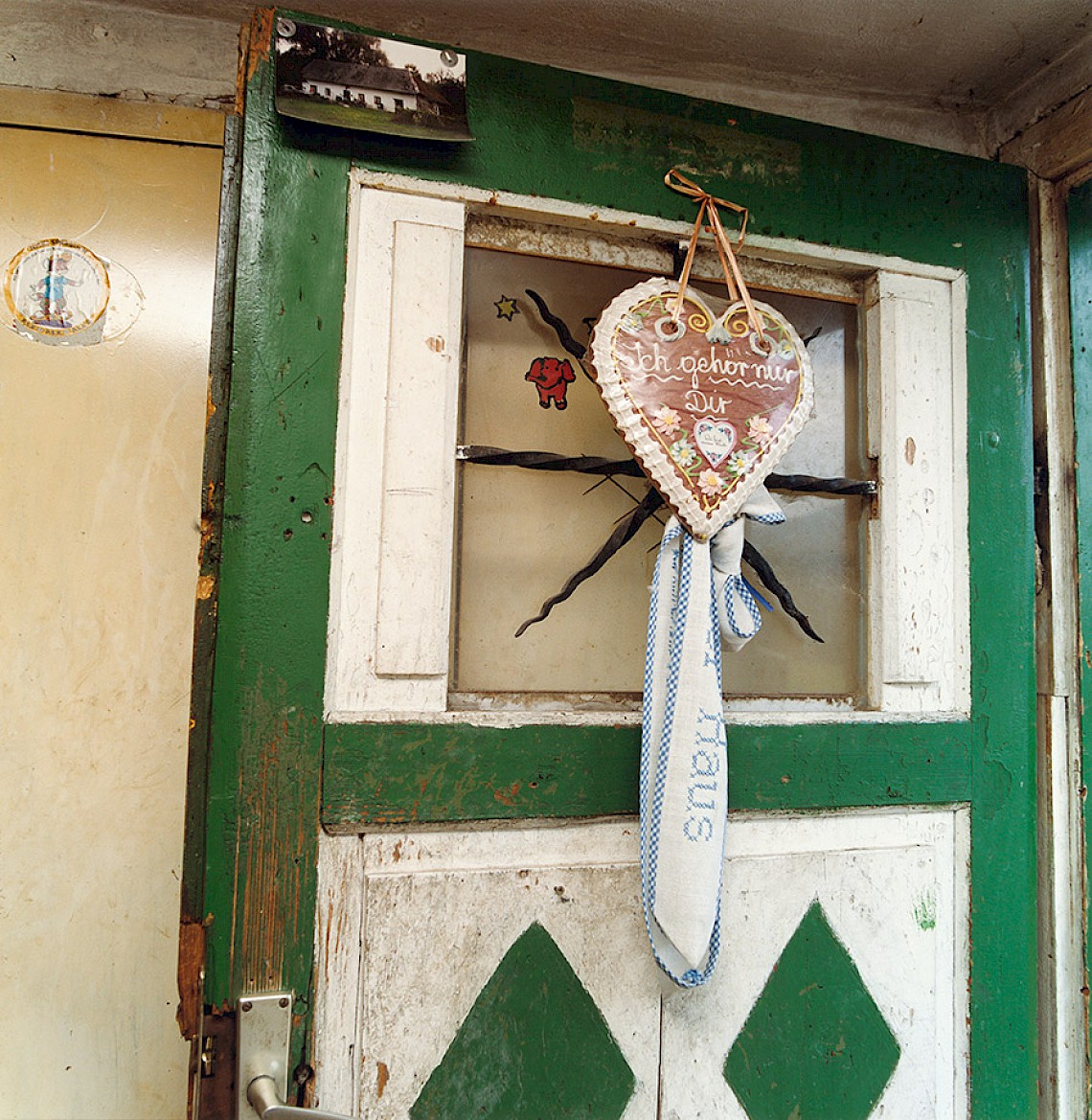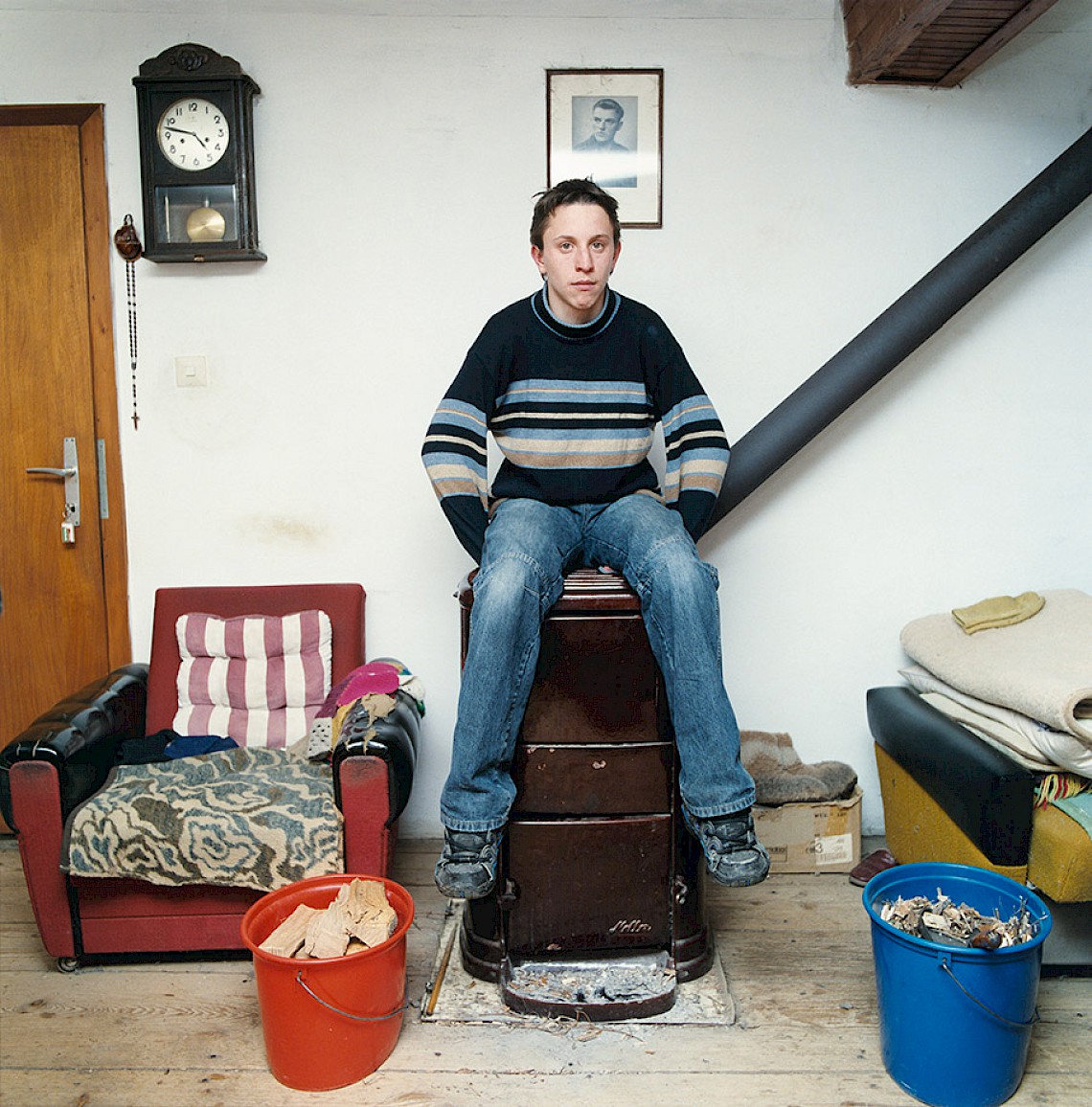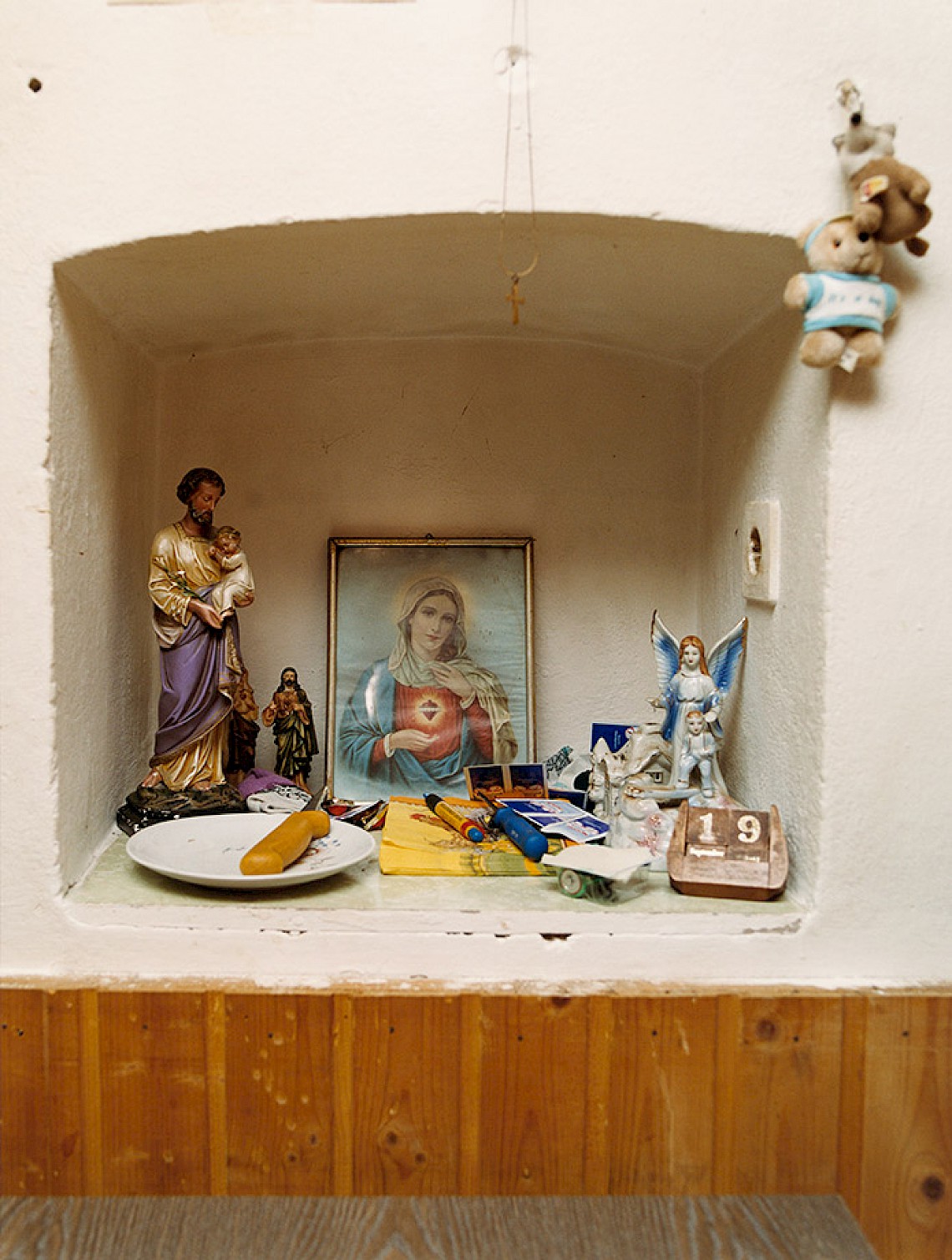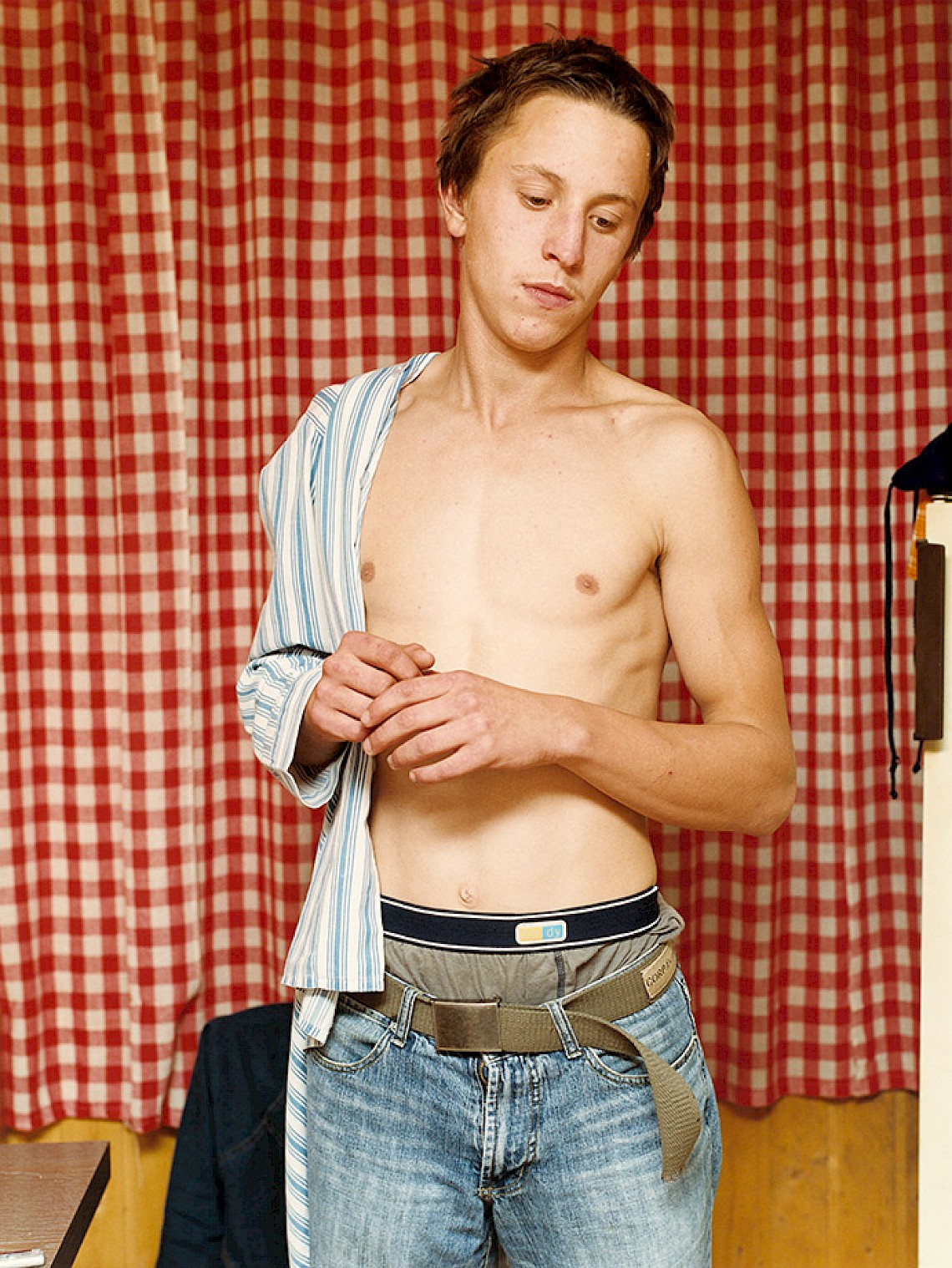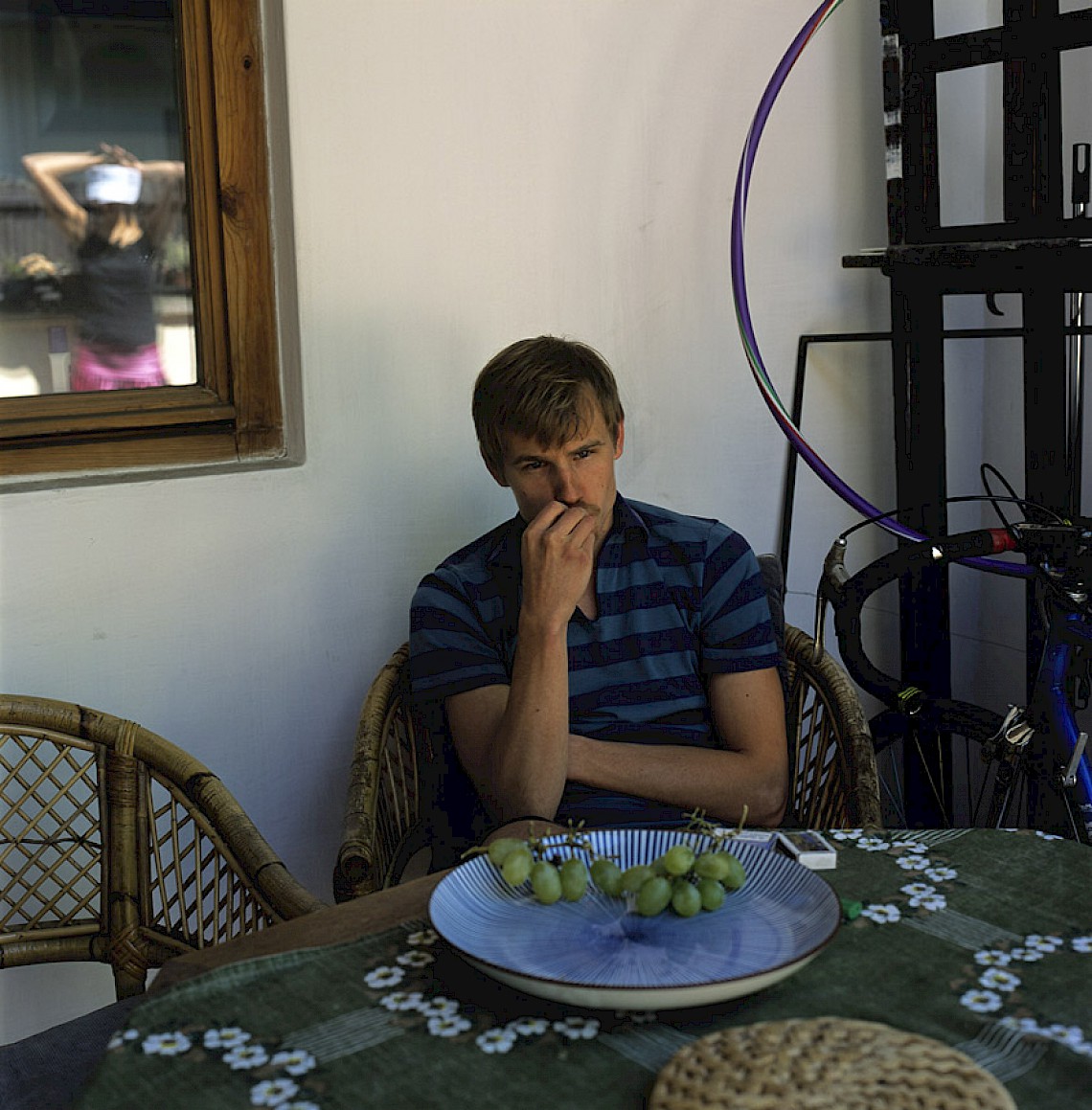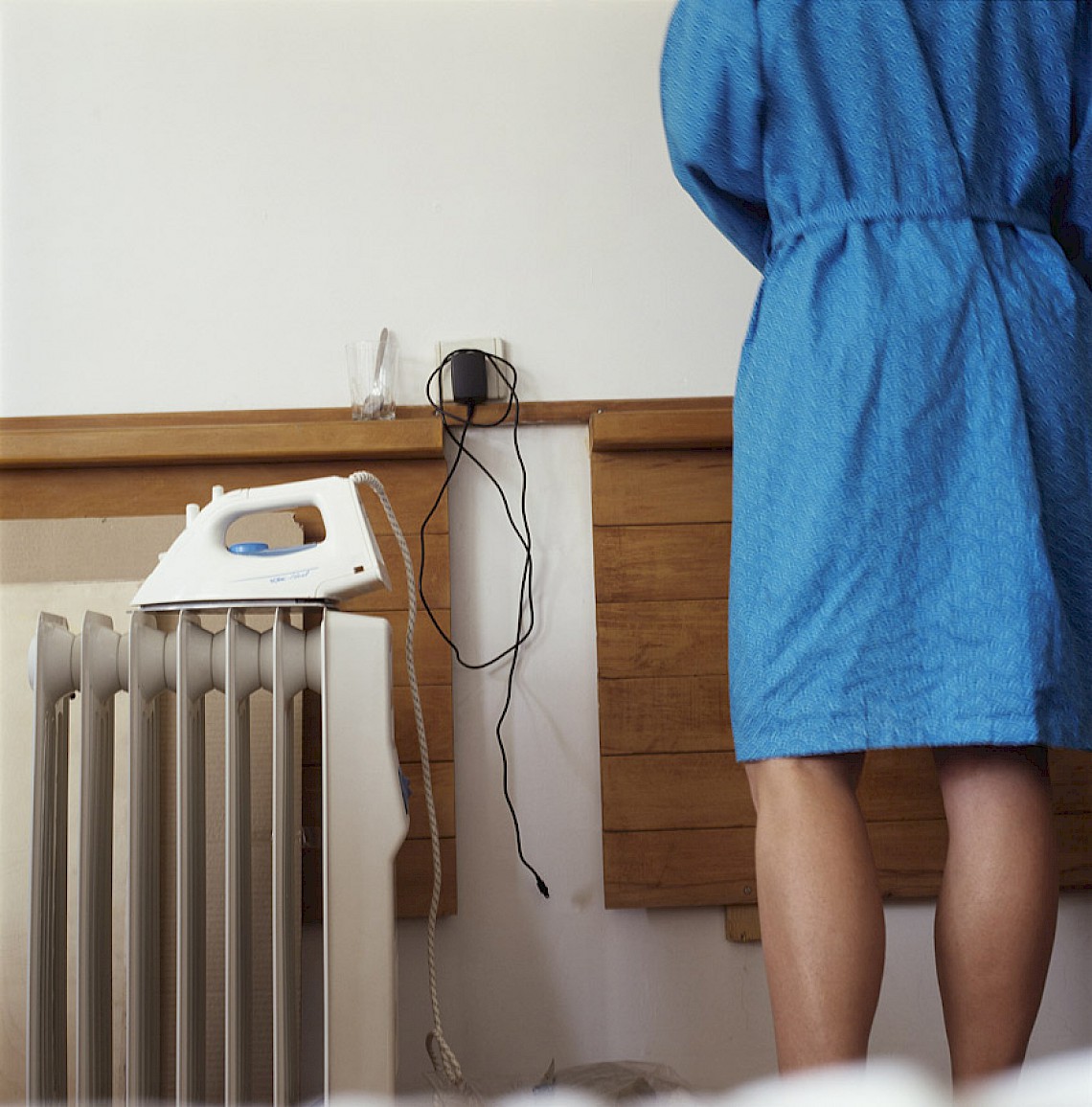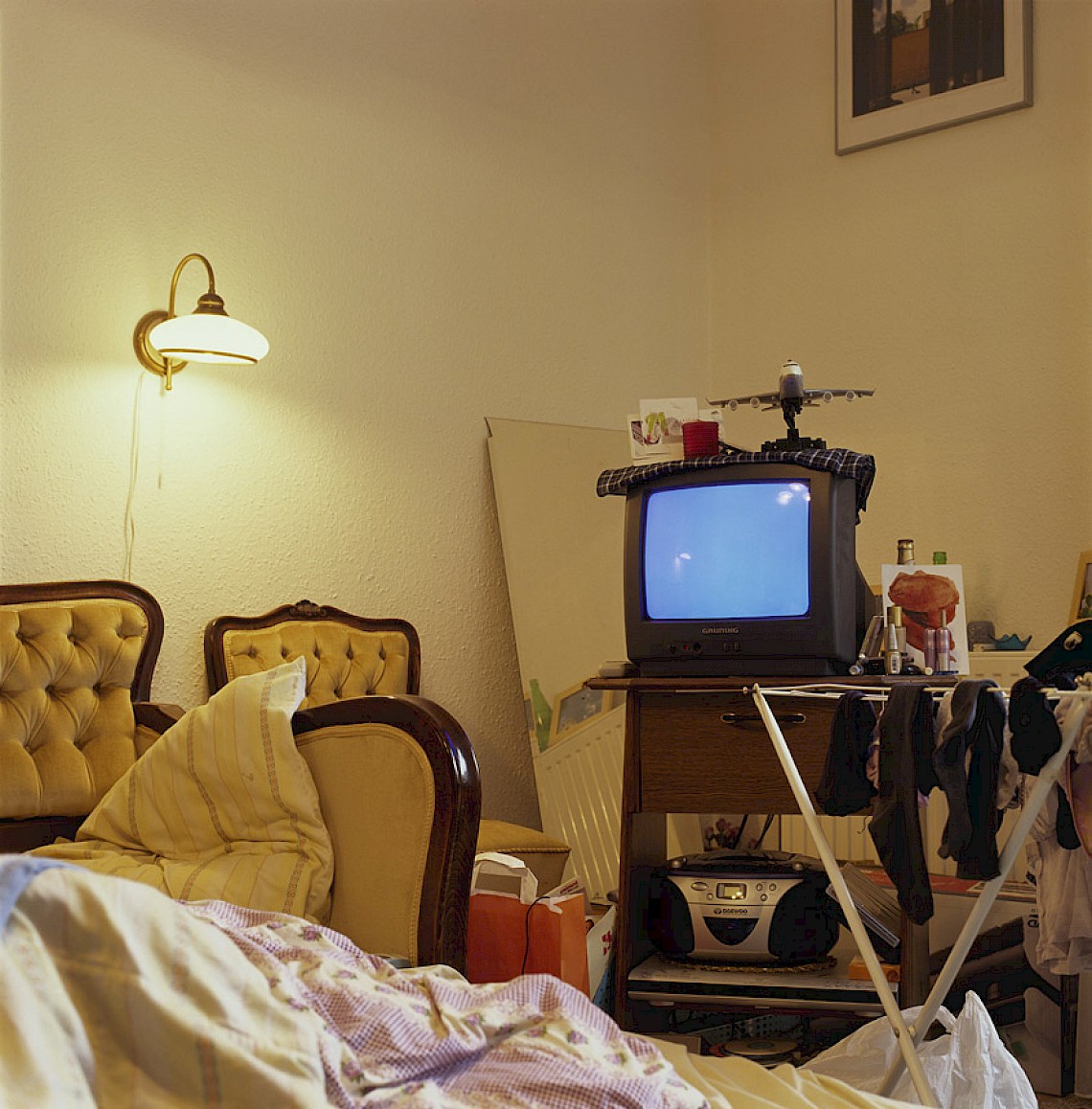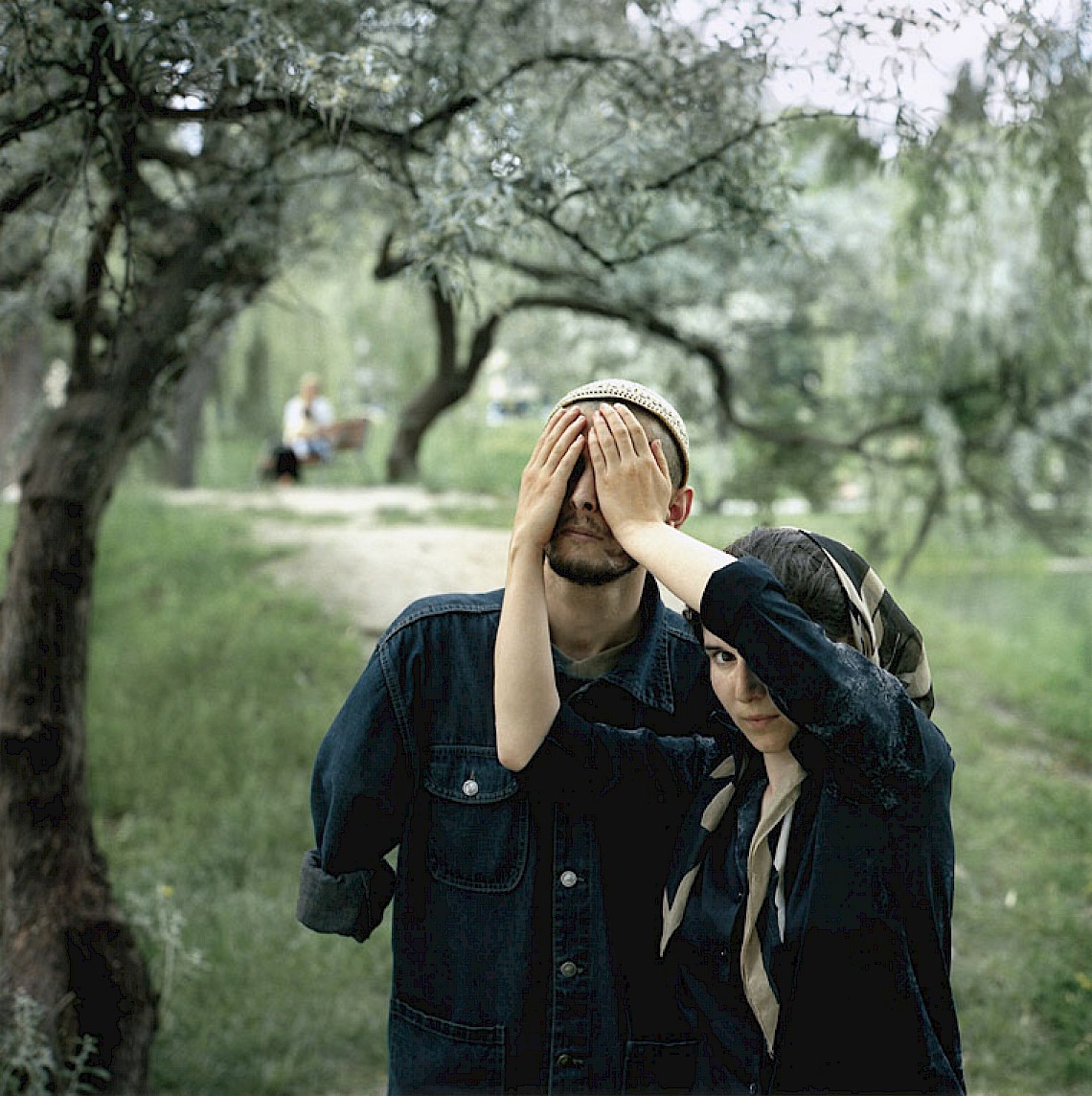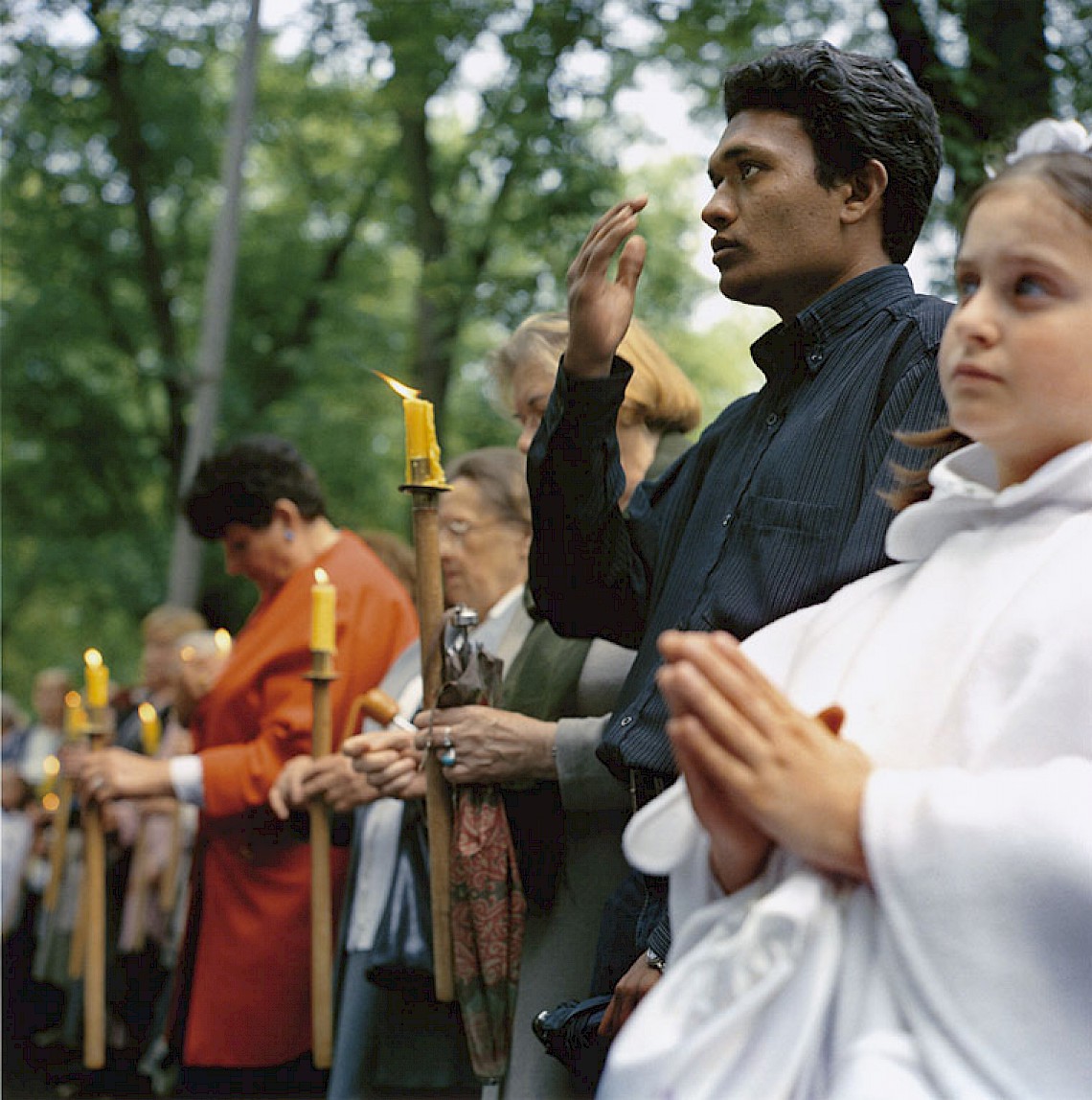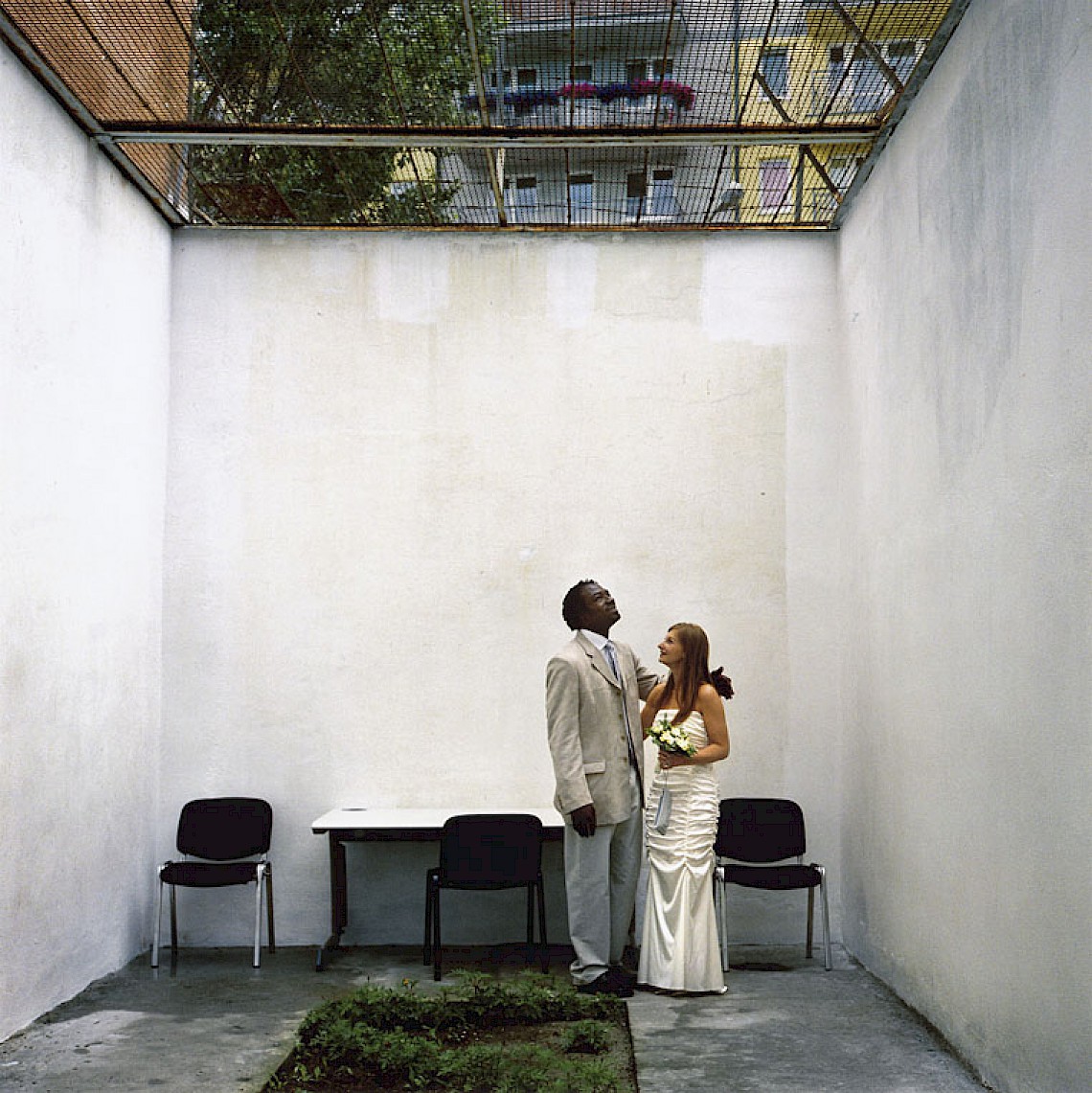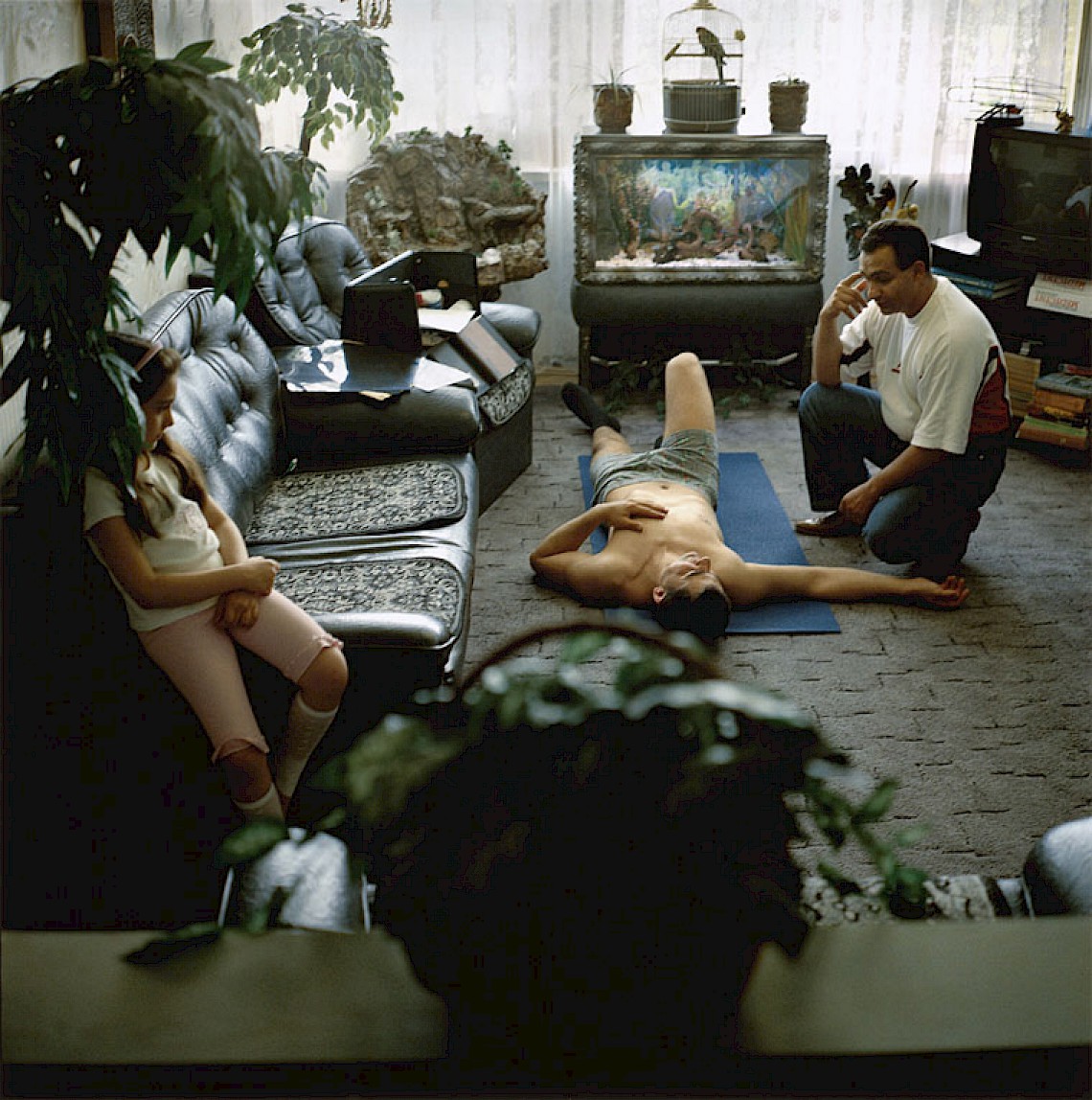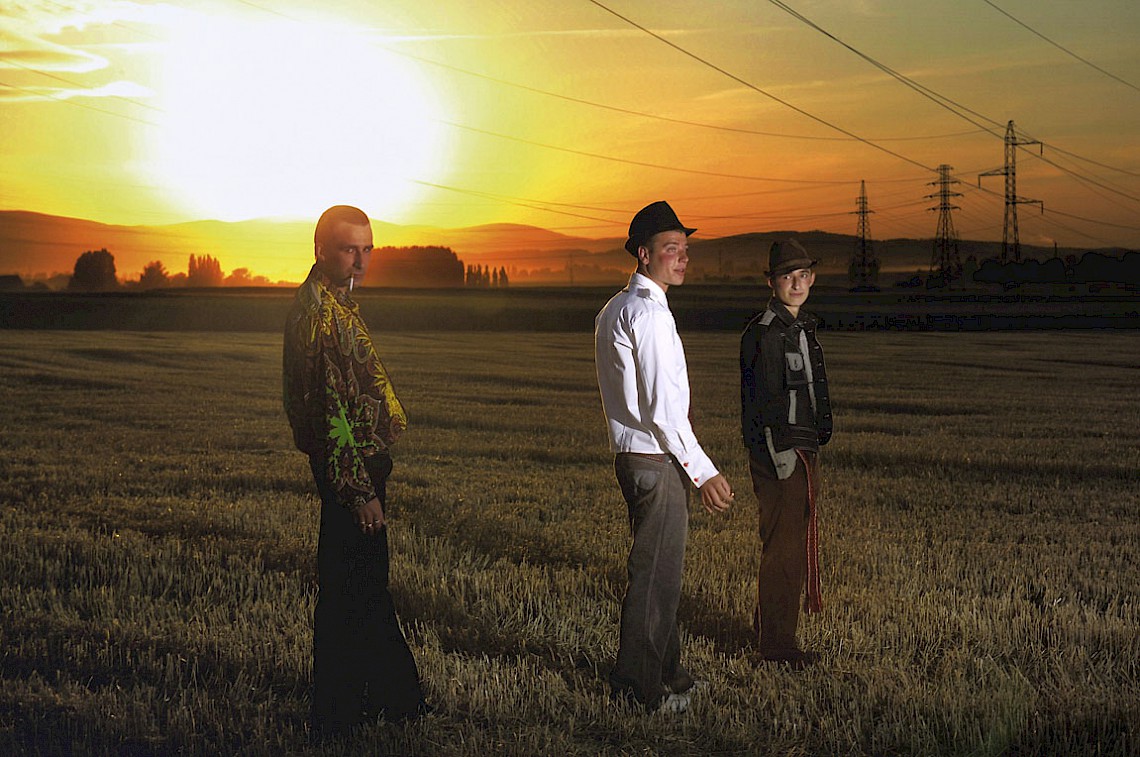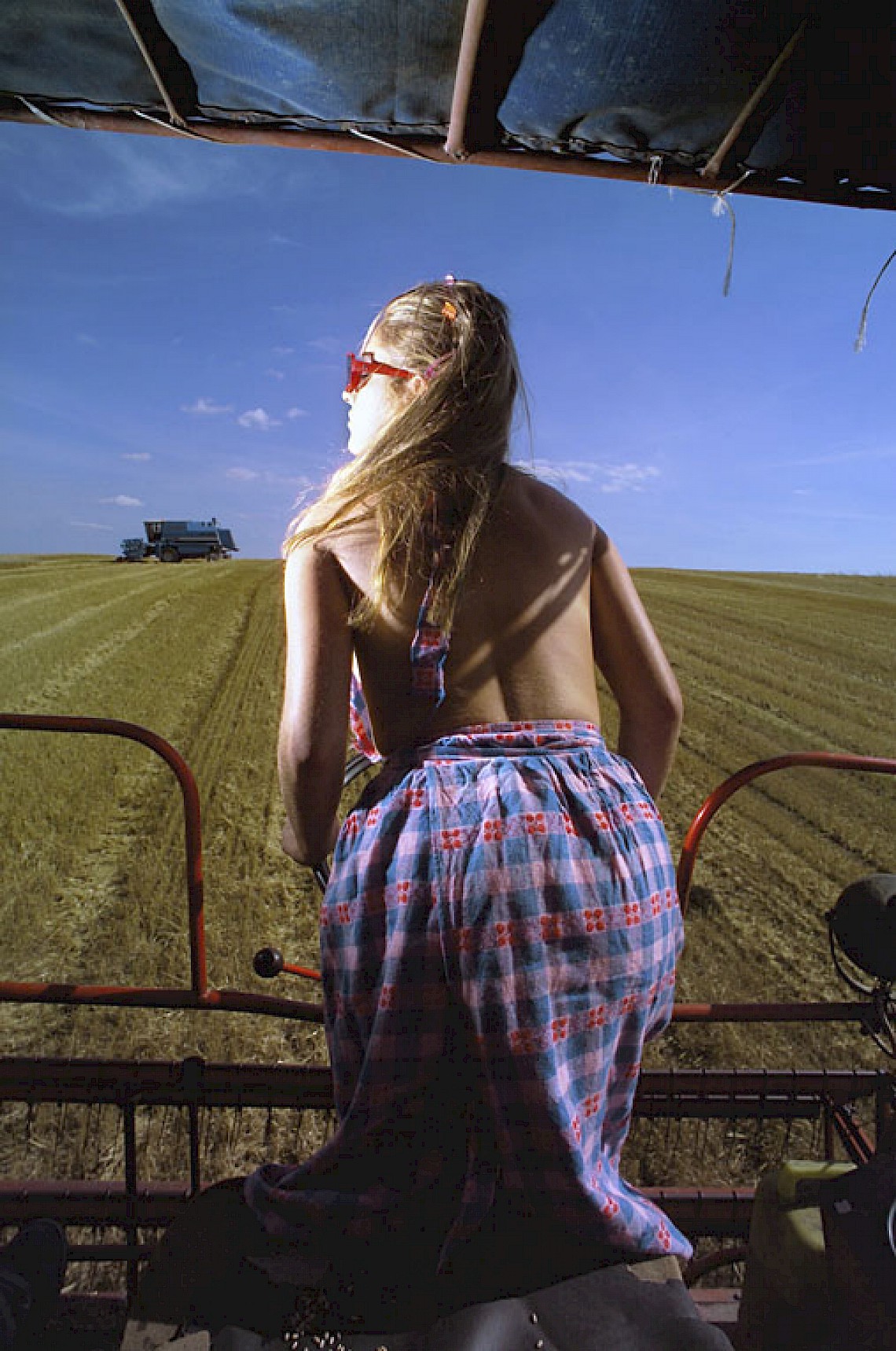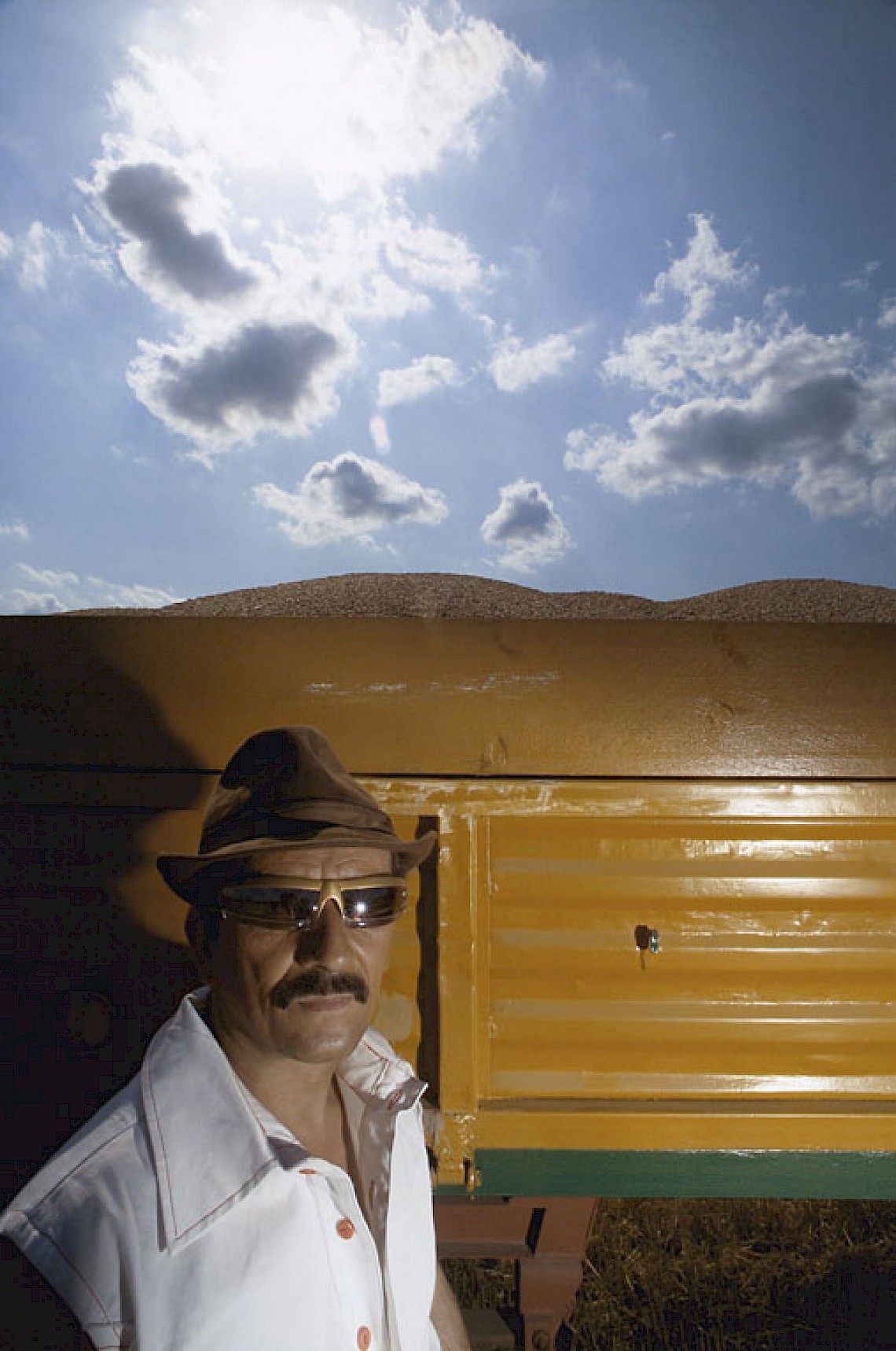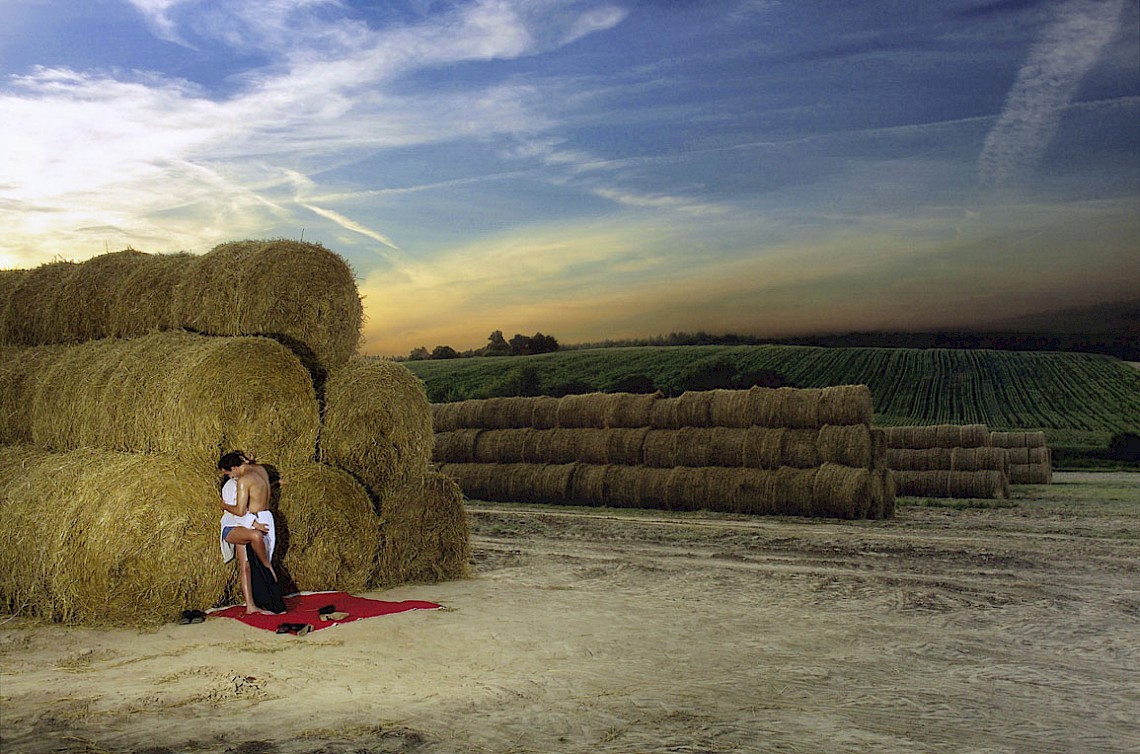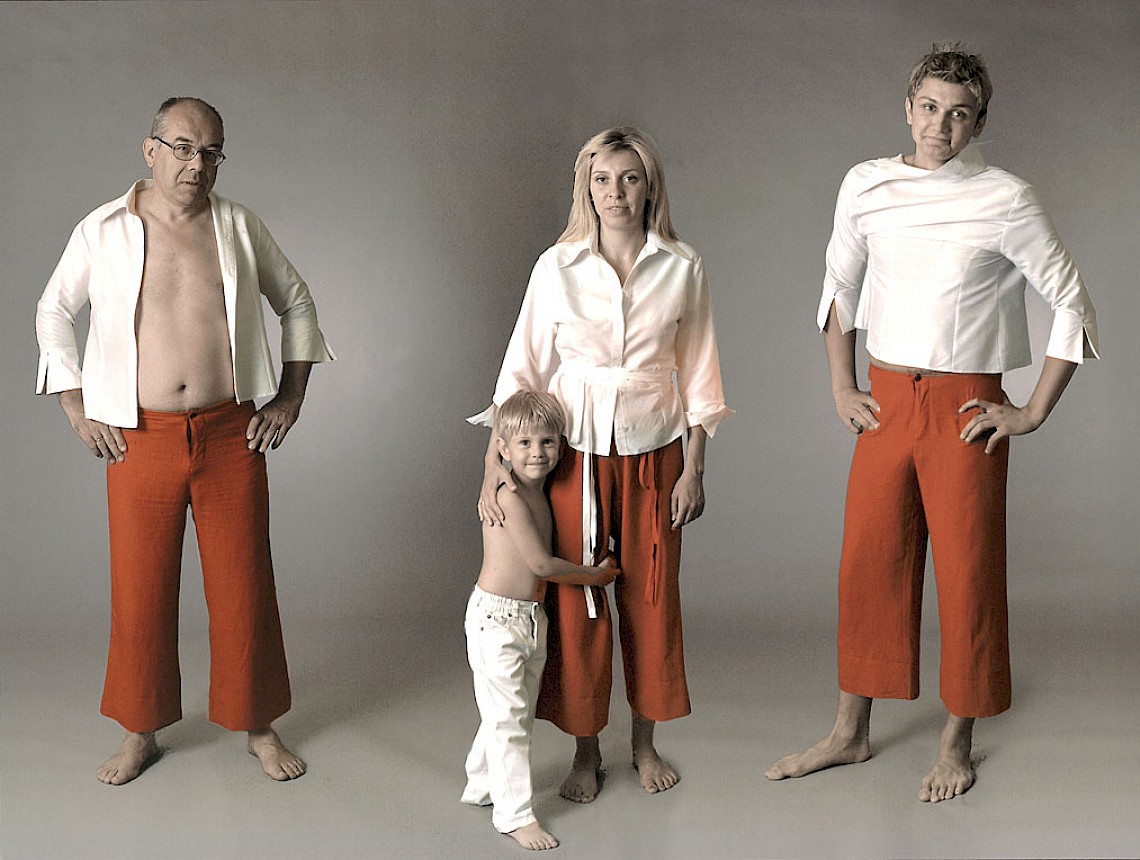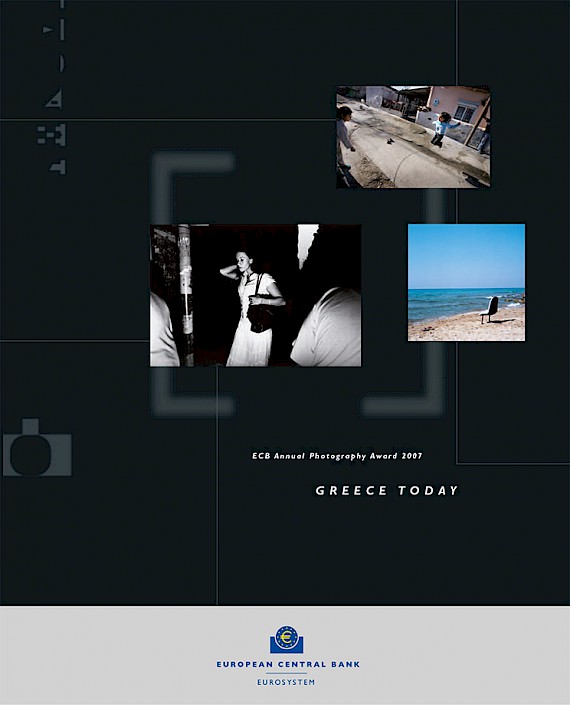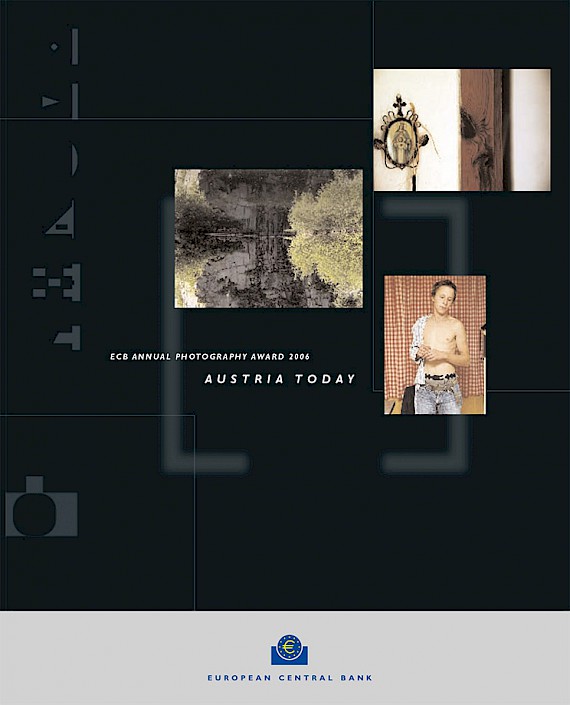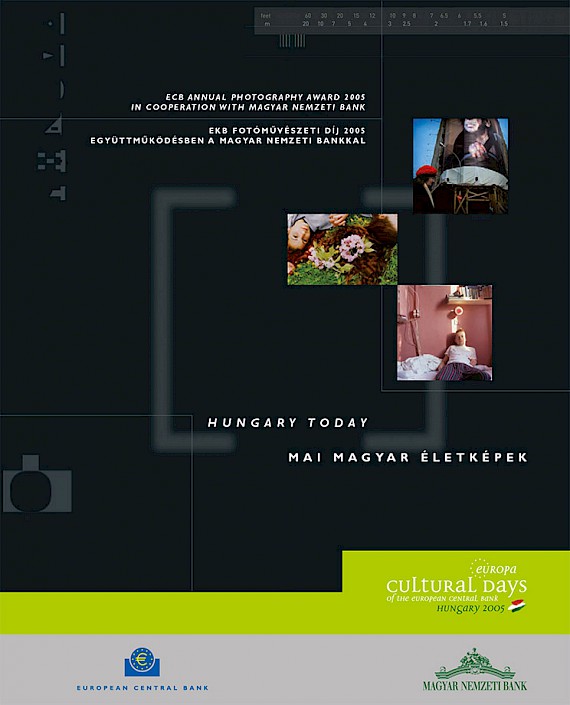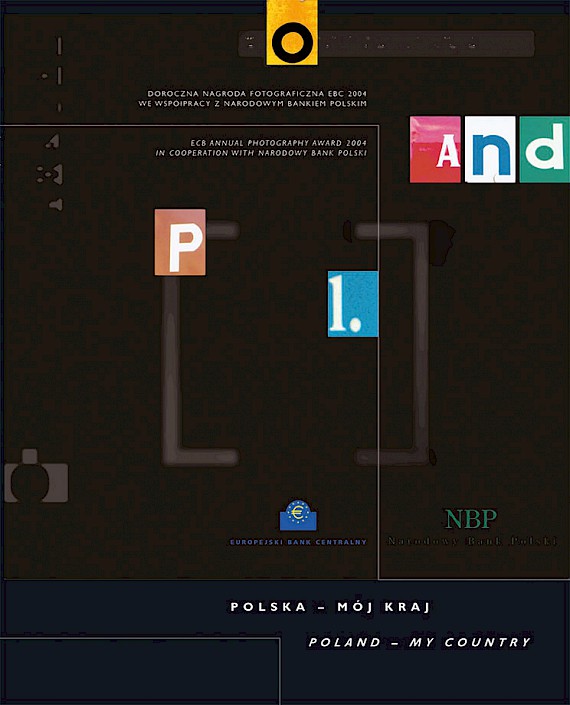ECB Award
How do we experience different cultures? How are they perceived as a group? In a united Europe, how can identities be preserved and, at the same time, common structures be ‘experienced’ and communicated?
Communication has a special role to play here. It acts, as it were, on two levels. Wherever people live, they act by using signs and sign systems, and by taking quite concrete action. This is everyday life, and it is eclipsed by the ‘global’ media: newspapers, magazines, radio, TV, internet, etc., both at national level and across borders. It is the pictures, and especially photographs, rather than the language, that leave a mark.
Photography is a contemporary medium which can almost be used in the same way as a language. Photographs, however, can be interpreted in a different way to the many spoken languages; there are no language barriers. However, photographs are also based on specific cultural perspectives.
Even their use differs, as does their relationship to reality. Photographic pictures document and create a media reality under aesthetic conditions which are presented in very distinct ways by cultural mentalities. The history of photography offers many examples of socially engaged photographers, whose pictures not only had political consequences, but which also influenced the style of the visually oriented media. The American Lewis H. Hine documented child labour in the United States (which resulted in children receiving protection) and, on behalf of the Red Cross, the living conditions of the poor in eastern Europe after the First World War. But without doubt the largest project was the photographic record made of the precarious economic situation of the rural population of the southern states of the US by the Farm Security Administration (FSA) in the 1930s, to which the most famous photographers of the time contributed.
For other purposes, Henri Cartier-Bresson from France and Robert Frank from Switzerland took photographs of a very different kind in the US. The books that were published became a ‘mirror’ for the Americans and a visual interpretation of a then distant country for Europeans. René Burri, also a Swiss national, took photographs in the Germany of the 1950s. His book about the Germans has become a historical document of ‘typical’ German ways of behaving at a time when new forms of identity were being sought. Projects like these could certainly serve as role models and set the standards for a European project. Photography is the medium of a European Central Bank project which promotes cultural exchanges. The ‘ECB Annual Photography Award’ is an annual event for photographers of all ages. How do photographers see their own culture and the cultures of others? It’s on the basis of this question that they can formulate their concepts and themes themselves. Such a project is quality-oriented and expects high standards, those of the kind provided by artistic photography. This type of photography experiments with forms of expression and looks for new perspectives for contemporary visual communication.
Unlike press photography, which follows daily events and is determined by the ‘client’, the ECB’s project should be marked by ‘free’ observation and ‘subjective’ views. Out of the mass of themes, pictures should emerge which form a photographic culture to counteract, above all, the fleeting images offered by the television screen. The criteria for artistic photography result from aspects shaped not only by European art tradition but also, and specifically, by different contemporary forms of aesthetic models and by particular themes relevant to the respective period. These differences account for the dimensions of such a project.
In addition, the documentary dimension, reportage style or narrative is a component of the photography. A visual memory could be created in the photographs based on the rapid change in the varied experiences of different generations and peoples in Europe. As time passes, a contemporary mirror becomes a historical document. Even after a short time, the project leads to a rich store of contemporary art, a foundation stone for a collection of contemporary photography by the European Central Bank.
Professor Claudio Hils, curator of the ECB Annual Photography Award, and Professor Manfred Schmalriede
- Romania (2009)




1st prize: Nicu Ilfoveanu / “Steampunk Autochrome”
Nicu Ilfoveanu uses a special camera technique in order to portray his images as “present-day vedute”. Rural scenes and industrial plants are presented in photographic compositions of colour and light as if they were atmospherically charged paintings. But at the same time, the way these photos have been taken leaves an irritating impression. Instead of enrapturing through aesthetic detail or portraying specific moments frozen in time, the many scenic and social transformation processes are raised to a meta level. Increasingly, the picture’s first impression changes: its melancholic character morphs into a sharp image of the present, in which reality becomes tangible, precisely because of what has been excluded. The degree of aesthetic beauty Nicu Ilfoveanu allows in his photos becomes idealised in its opposite and unmasks a longing for inner pictures of utopian nature.



2nd prize: Iosif Kiraly / “RECONSTRUCTIONS”
Iosif Kiraly uses the potential presented by digital image reworking in order to combine different shots of real places, thereby creating new compositions. Each image turns out to be a construction of details which the artist had actually photographed in one place, but these are combined in a special way. Thus the compositions contain several layers of time. Different realities are intertwined through the artistic process into one simultaneous constellation. The artist deconstructs social and political events by means of his image compositions. His photographs of open squares, analyses of architectural ruins and documentation of theatrical performances fragment national symbols and social conditions, and also encourage a consideration of memories and their construction.




3rd prize: Dragos Lumpan / “The last transhumance”
For just under one and a half years Dragos Lumpan photographed a shepherd family, whose sheep prove to be of almost archaic or symbolic effect in the resulting photographs. Flocks of sheep continue to be economic reality in Romania, amongst other places, yet in spite of their long history and diverse cultural integration they seem almost exotic. Dragos Lumpan breathes new life into the myth. He portrays the flock as a crowd and documents the lifestyle of the shepherd family. The artist takes very subtle pictures which transform any romantic idealism into its opposite: lights from the nearby town, the light from the radio playing and from the trailer which serves as a place to sleep create razor-sharp fractures that carve through social developments. In this way, the pictures also become metaphors for a profound revolution in Romanian society.
- Europe (2008)




1st prize: Lucia Nimcova “Unofficial”
Lucia Nimcova’s photographic series “Unofficial” is a multifaceted examination of the visual aesthetics of everyday life in a former communist environment. In the series, selected photographs are restaged. People who have since aged slip back into photographic settings that convey a particular aesthetic of everyday life and politics of visual culture. The highly staged nature of the series puts it at a critical remove, whereby historical pictures are approached without cynicism. Instead, images from the collective memory are examined in terms of the specific historical messages they convey to younger generations.




2nd prize: Wytske van Keulen “Andzelika”
The series “Andzelika” is about a young Polish woman. Since last year, Polish employees have been able to work in the Netherlands without restrictions. Andzelika’s parents, like many Poles, will seize this opportunity, and are on the verge of relocating to a new country for good. The 17-year-old Andzelika must make a decision: will she follow her parents or stay in her home country? The pictures tell the story of both places. They show Andzelika, her family and their life together. They put across the idea of being in between two systems in a united Europe, a situation that brings with it opportunity, reality and inner conflict all at the same time.




3rd prize: Raphael Dallaporta “Domestic Slavery”
“Domestic Slavery” is a photographic project that traces forms of modern slavery in Europe. It deals with real-life fates of people and actual places where crimes were committed. The combination of texts and images creates reports that reveal crime scenes behind a facade of normality and document the actual fates of people.
- Greece Today (2007)




1st prize: Vagelis Georgas
The photographs of Vagelis Georgas form part of a long-term work in which Athens is portrayed as a living space and stage on which the daily routine of contemporary life unfolds. His photographs explore the relationship between people and urban landscape, which helps to shape the image of public space in a city undergoing constant transformation. In this particular section of his work, the photographs depict scenes taking place in the streets around Omonia Square, as well as religious rituals and cultural events organised by immigrants in contemporary Athens.




2nd prize: Myrto Papadopoulos
The photographs of Myrto Papadopoulos form part of a broader photographic work extending from the region of Evros to the islands in the South Aegean. The photographs presented here have been taken mainly in Didymoteixo, a town in Thrace, in the north-east of Greece. The people portrayed are Muslims and immigrants of Greek citizenship, originating from the countries of the ex-Soviet Union. They live on the fringes of the city and of social life, and despite their tough living conditions still retain their own rich cultural heritage.




3rd prize: Angeliki Svoronou
The photographs of Angeliki Svoronou record a journey in the country of tourist “development” and “exploitation”. Landscapes devoid of people, with the blue and white national flag waving proudly over the white sunshades behind stacked deck-chairs.The flag reminds us of Greece and the beach umbrellas of holidays. Two symbols co-existing in the arena of consumption and globalisation, each carrying its own mythology.
- Austria Today (2006)




1st prize: Gerlinde Miesenböck “Land_Sterben”
Gerlinde Miesenböck reacts photographically to a form of rural culture in Austria. By appearing in her photographs she couples a questioning of the tradition and stereotypes of rural culture with a self-reflection which, overall, evokes a mood of poeticism. Photographic, film and narrative elements are fused in an elegiac story of the loss of home and a rural past – a story which, beyond an exaggerated romanticisation and feeling of melancholy, transports places to a state between image and reality.




2nd prize: Tatjana Lecomte “Fallschirmspringerwand”
The photographs form part of an ongoing project in which the artist explores the landscape in the surroundings of concentration camps. The “Parachute Wall” refers to a cliff located in a quarry in Mauthausen in Upper Austria. It was given its name by SS men on account of a practice whereby people were pushed off its edge. The photographs show reflections of the cliff on the surface of the water and, in turn, are themselves turned upside down. Especially through this process of inversion, the photographs of Lecomte appear as a subtle questioning of the Austrian picture of history. Without history her photographs cannot be comprehended. What matters, then, is the history behind the picture. Her work presents this “charming” landscape as a place of violence.




3rd prize: Paul Kranzler “Landjugend/Thomas R.”
Paul Kranzler took pictures of a young man over an extended period. The resulting “portrait” enables us to enter the specific social sphere of a young person in a rural setting. Repeatedly Kranzler couples pictures of his protagonist with details from the latter’s immediate environment. The images betray the artist’s intense preoccupation with his model. Through details and poses Kranzler asks questions about the relationship between documentation and construction. Thus, the social analysis calls for a second look at people and their environment.
- Hungary Today (2005)



1st prize: Dezso Tamas
The present: Hungary in 2005. What is Hungary today, and what is this “present”? The words and expressions most commonly used to describe it are “European Union”, “globalisation” and “information society”. The world is making enormous technological progress, yet at the same time and to the same degree, it is becoming smaller. This is what is meant by globalisation. We receive real-time information on events in any part of the globe, and in the twinkling of an eye, we can contact anyone anywhere: distances no longer exist. Never has Hungary faced such a challenge and such an opportunity as that now offered by technological development and history. Now is the time to create opportunities for the young and for future generations. The social and economic transition must be completed by a change in Hungarians´ way of thinking: knowledge and openness become an integral part of their lives. We must face the fact that when people´s lifestyles change, the structure of urban areas will change too. The current state of the environment cannot be regarded as an issue of minor importance. Society as a whole, and each individual within it, must act to ensure that we can hand down to the coming generation our local and global environment with a clean conscience. Hungary today: hopes and dreams. Children and young people who want to learn and get by, the middle-aged, weary old people and those left behind. People must learn new words such as confidence, success and creativity. We will need them in the future. (Dezso Tamas)



2nd prize: Peter Puklus
I collect portraits of the people around me. I explore and document those that are close to me in one way or another (I collect memories). Slowly I will get round to all of them. Whether showing relatives or friends, the end-product must always be a symbol of our relationship, the relationship among those appearing in the pictures, or the personal mystery, a reflection of which lights up in the subjects´ eyes. I capture moments enchanted by an expression of trust; this is intimacy and photography or, in other words, the history of love, friendship and identity. The pictures submitted form part of a long series, which is of course still in the making, still expanding. The first one was taken sometime this spring. The title of the series is: Intimacy – no title. I take complex pictures which incorporate the subject as well as their surroundings; part of the original concept was to emphasise the surroundings. Before taking a photograph, I normally visit my subjects´ home several times to select the best scene and time. I try to enter into their lives so that thy will be comfortable with my presence. I try to rearrange things as little as possible to preserve their intimacy and to present a real-life and authentic situation. The people appearing in the photos are friends and relatives. The title of the individual pictures is that of the person depicted. No title refers to the viewers of the collection as a whole, who will always remain outsiders. Whether the person in the picture is called Pista or Jozsi will make no difference to them. (Peter Puklus)


3. Preis: Lilla Szasz
I have selected five photos from two different series for the ECB´s photography competition. The two series contain images of, respectively, young female offenders and prostitutes. They are entitled “Portraits from a Female Juvenile Deliquent Institution” and “Joy girls”. Although the theme itself may imply a sociologist´s point of view, what motivated me most in making these images was to find out about the attitude of women of different social backgrounds to their womanhood, and how they find joy in their lives. The photos in “Portraits from a Female Juvenile Deliquent Institution” were taken in a Budapest institution which houses young female offenders and homeless mothers. In this series, I address the issue of how young women and mothers preserve their womanhood in such inhuman circumstances: how they try to brighten up their lives, and what little joys they derive from their confined world. Many of the photos are highly stylized. In a number of instances, the girls came up with their own ideas of how they would like to pose in the picture. Part of my underlying concept was to allow myself to be led by them, and to make sure that by giving them enough time they would enjoy our work together. I asked a number of the women to dress up, pose and use accessories as they thought would suit them best, or as they would like to see themselves in a photograph. I regard the institution itself as an important backdrop, yet my intention was not to give a sociological slant to the pictures. Today greater attention is devoted to the role of women in Hungarian society. The place of prostitutes has always been highly controversial as they are judged on the basis of their profession. The title “Joy Girls” is in effect a pun which reflects the following question: is it possible to find happiness in a situation where a woman is doomed to be humiliated, particularly in a society which rejects outright anything that does not fit into the box labelled “normal”? My intention with these photos was to show the audience that prostitutes are human beings just like anybody else, with the same joys and sorrows. (Lilla Szasz)
- Poland – My Country (2004)




1st prize: Lukasz Trzcinski “Our foreigners”
Since the enlargement of the European union, Poland has become a more attractive destination for many refugees who wish to start a new life – a life they have saved by fleeing their own country. At the same time, the regulations regarding the treatment of foreigners have been made very strict. Every year, thousands of people come to Poland in the hope of receiving asylum. They wait for their applications for asylum to be processed, while their subsequent integration into their new surroundings is made more difficult by the low degree of social awareness of the polish people. Only a small number of people in Poland are able to distinguish the term “refugee” from ordinary immigration. This project is an attempt to give a face to concrete human dramas; it is an attempt to portray the problems with which refugees in Poland are confronted and to demonstrate difficulties surrounding their integration. At the same time, the project tries to show the potential that refugees have to offer us. Poland is their new country. Those that have been granted refugee status bind their fate with our country for good. While they are waiting for a positive response to their application for asylum, a process which can often take several years, they integrate so well into the society that they can no longer imagine living in any other country. Many of them are granted Polish citizenship, thus becoming compatriots with the same rights as us. This project is an attempt to define the position of refugees in society, an attempt to find an answer to the fundamental question of identity.It is an attempt to touch on the eternal question of what it means to belong to and function within society. (Lukasz Trzcinski)




2nd prize: Radoslaw Polak
The inspiration for this project was a modern Polish village and the desire to give it a fresh image. The village has often been photographed. The motif is seen as the very embodiment of Polishness. But to me, these pictures lack a modern, positive image. The aim of my work was to create an image of the Polish farmer that differs sharply from the negative stereotype to be found in the media (the primitive bumpkin manning a roadblock). It was also my aim to introduce this image into the aesthetic of modern advertising. The cycle cannot be described as a documentary, but rather a mise en scene in which the farmers are seen against the background of their natural environment, but have been spruced up by a stylist an a make-up artist. The idyllic landscape of the Klodzko Valley (Sudeten mountains) forms the background to these photos, punctuated by polish agricultural equipment. I see Poland as an agricultural country in which the links between man and nature, as well as nature itself, are still of great value, and this is how I wish to present my country in Europe. (Radoslaw Polak)




3rd prize: Beata Frysztacka
I see myself as a portraitist and explain all topics through people. After all, Poland is the people who live there. There are many different people: beautiful, interesting, young and old, experienced and inexperienced. Various different people sat individually for my photos. Each of them wore, in their own way, the same white blouse and the same red trousers. I wished to give the “trying on” of the same clothes symbolic significance. Even the blouse was cut in a feminine style – which is only logical, since out Poland is feminine. And the trousers? Well, in Poland most women wear trousers. My models stand in a relaxed pose, in clothes which are not always a perfect fit. The white and red of the Polish flag and Poland itself make their presence felt only discreetly. They are not a perfect fit for everyone, some feel more at ease in them than others. My Poland tends toward the ordinary – devoid of pathos (hence the fisherwomen) and subject to fashion and trends (as can be clearly seen from the style of the blouse). I believe that Poland is reflected in the hearts and minds of the people in my portraits. (Beata Frysztacka)
- Publications
ECB Annual Photography Award: Romania
European Central Bank, Frankfurt am Main, 2009
ISBN 978-92-899-0609-8
ECB Annual Photography Award: Europe
European Central Bank, Frankfurt am Main, 2008
ISBN 978-92-899-0296-0
ECB Annual Photography Award: Greece today
European Central Bank, Frankfurt am Main, 2007
ISBN 978-92-899-0203-8
ECB Annual Photography Award: Austria today
European Central Bank, Frankfurt am Main, 2006
ISBN 92-9181-922-1
ECB Annual Photography Award: Hungary Today
European Central Bank, Frankfurt am Main, 2005
ISBN 92-9181-855-0
ECB Annual Photography Award: Poland – my country
European Central Bank, Frankfurt am Main, 2004
ISBN 92-9181-718-X
- Exhibitions
- 2010
- "Romania“, Europäische Zentralbank, Frankfurt, DE
- "Romania", National Museum of Contemporary Art, Bukarest, RO
- 2008
- "Europe", Photokina, Cologne, DE
- 2007
- "Austria Today", Galerie Westlicht, Schauplatz für Fotografie, Wien, AT
- 2006
- "Austria Today", Fotoforum International, Frankfurt, DE
- "Europe" | Deutscher Fotobuchpreis – shortlist 2008
- Stuttgarter Buchwochen, Haus der Wirtschaft, Stuttgart, DE
- Regierungspräsidium Karlsruhe, Karlsruhe, DE
- Internationale Bodenseemesse, Friedrichshafen, DE
- Frankfurter Buchmesse, Frankfurt, DE
